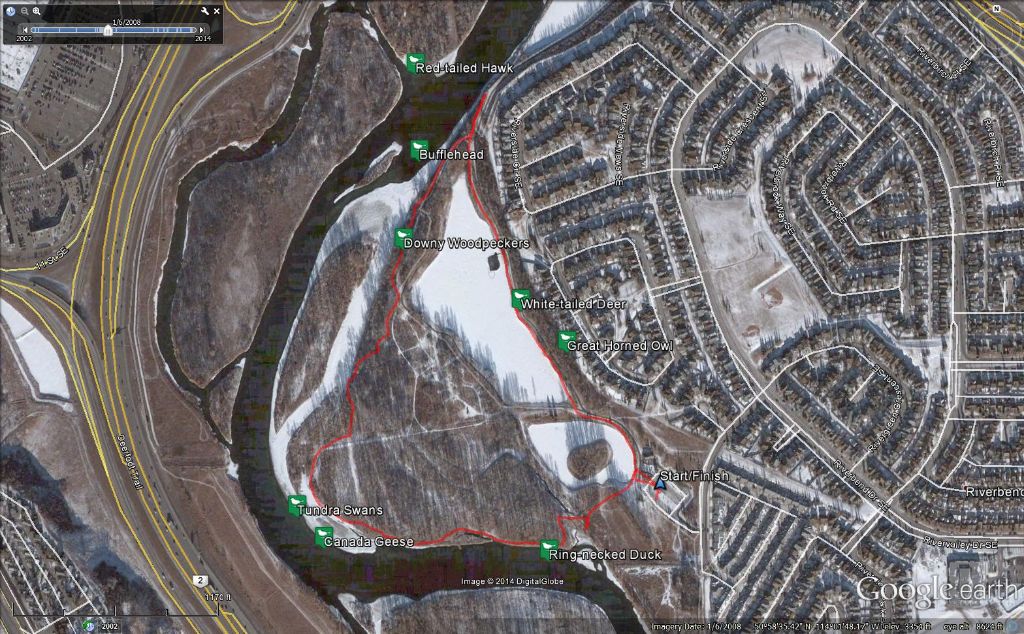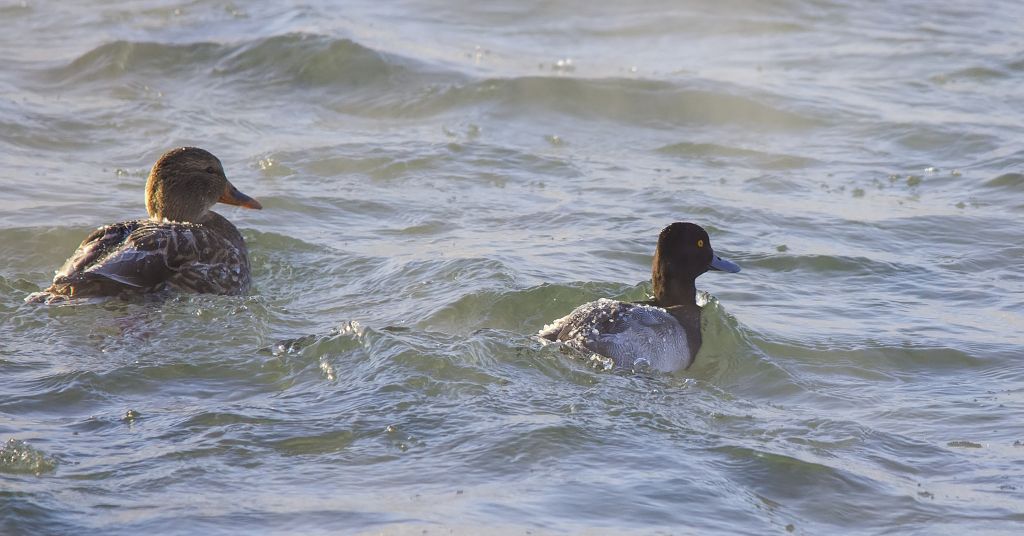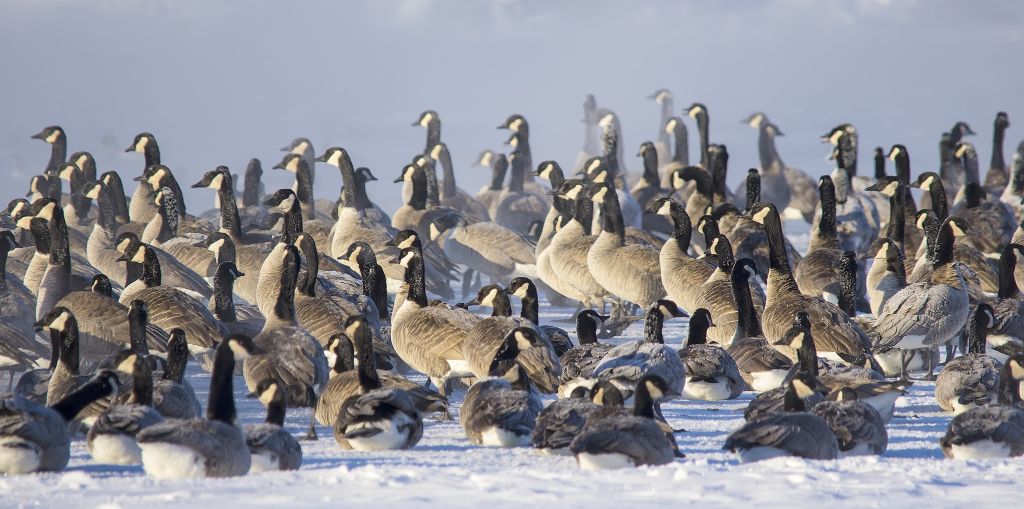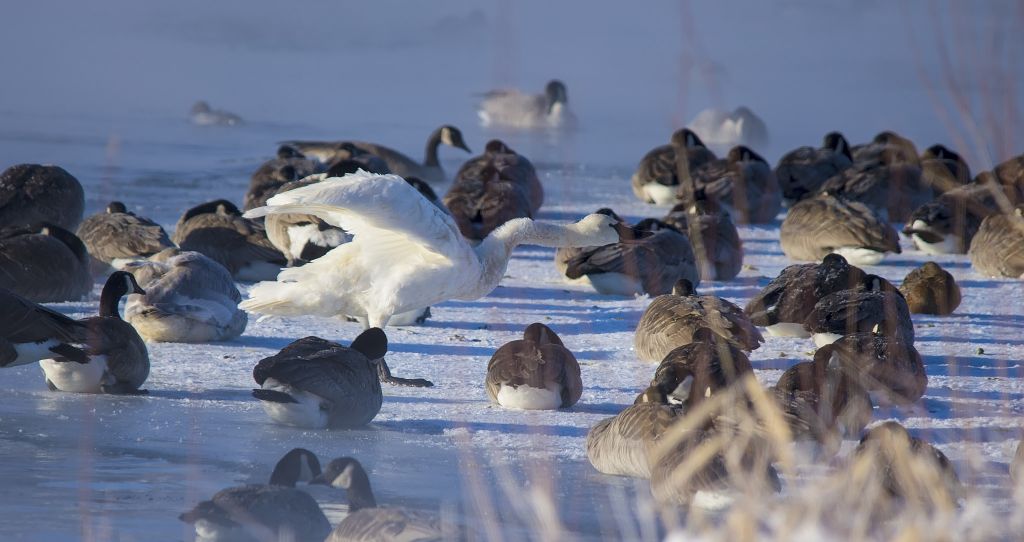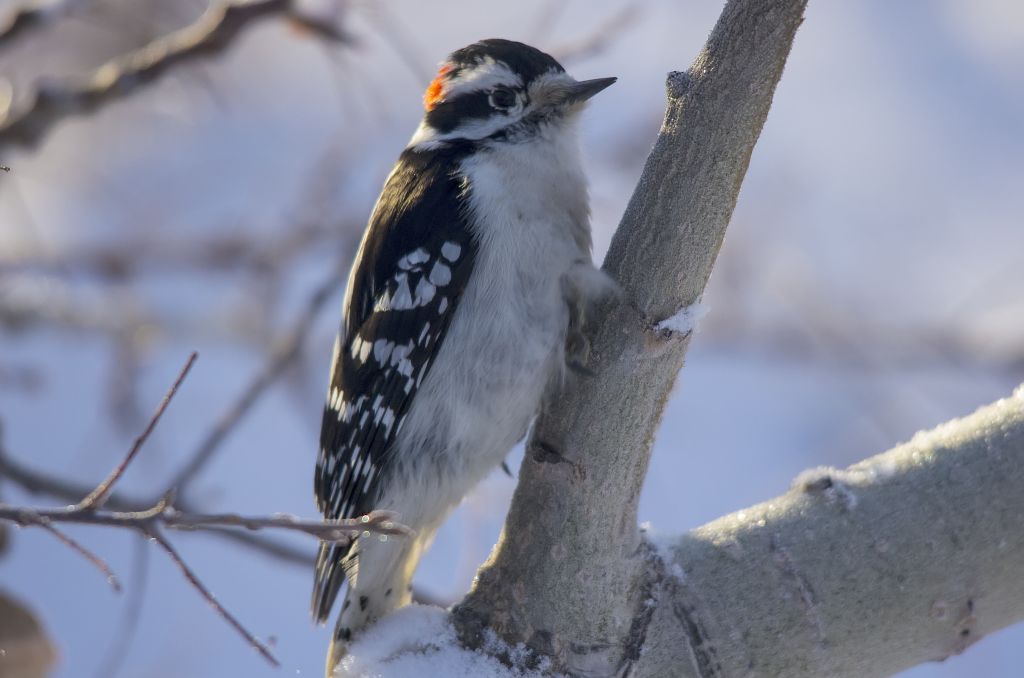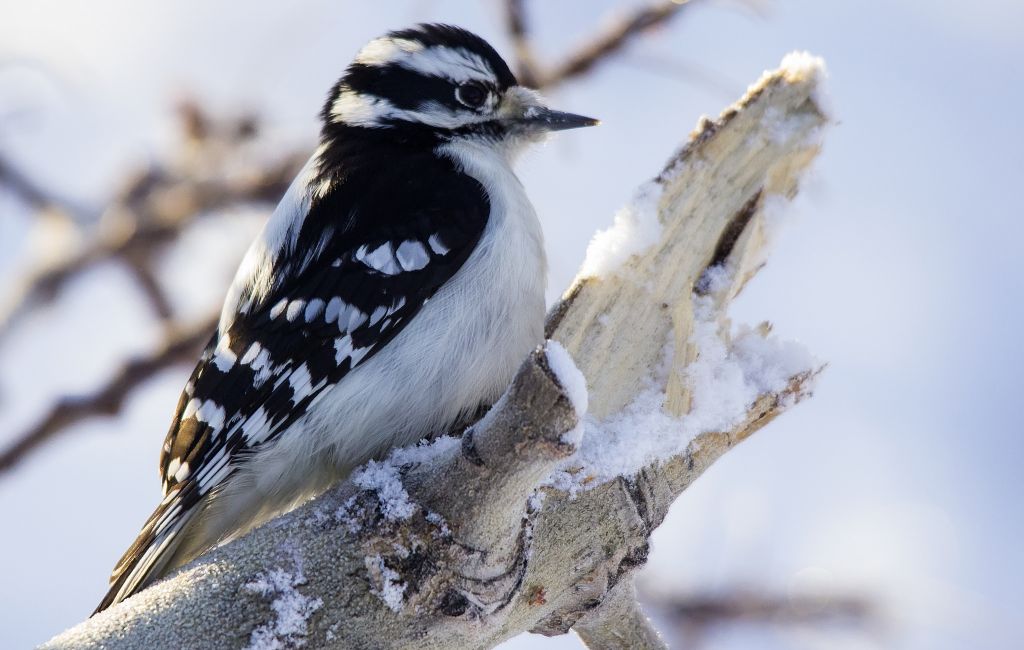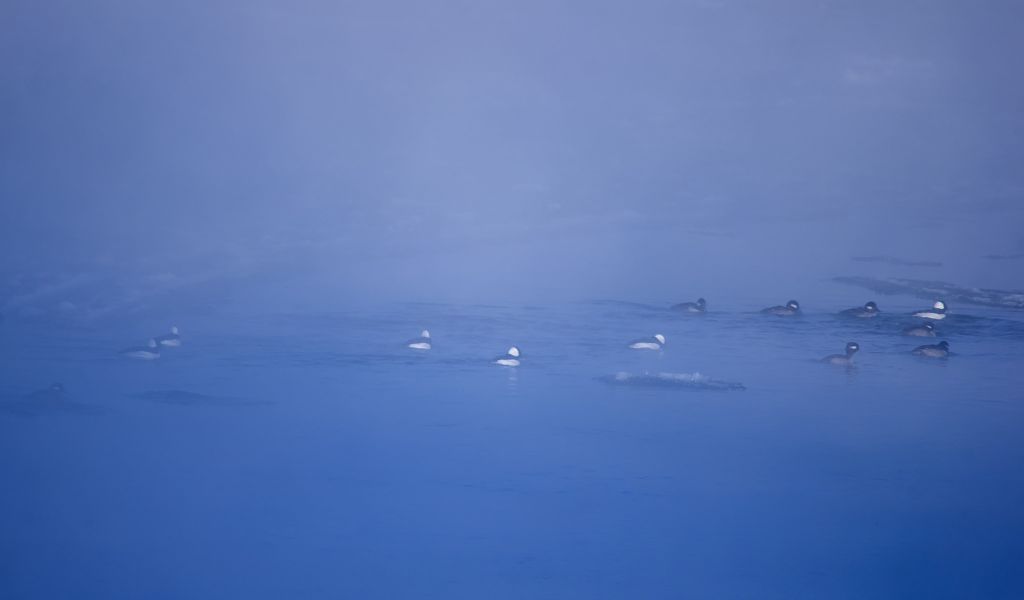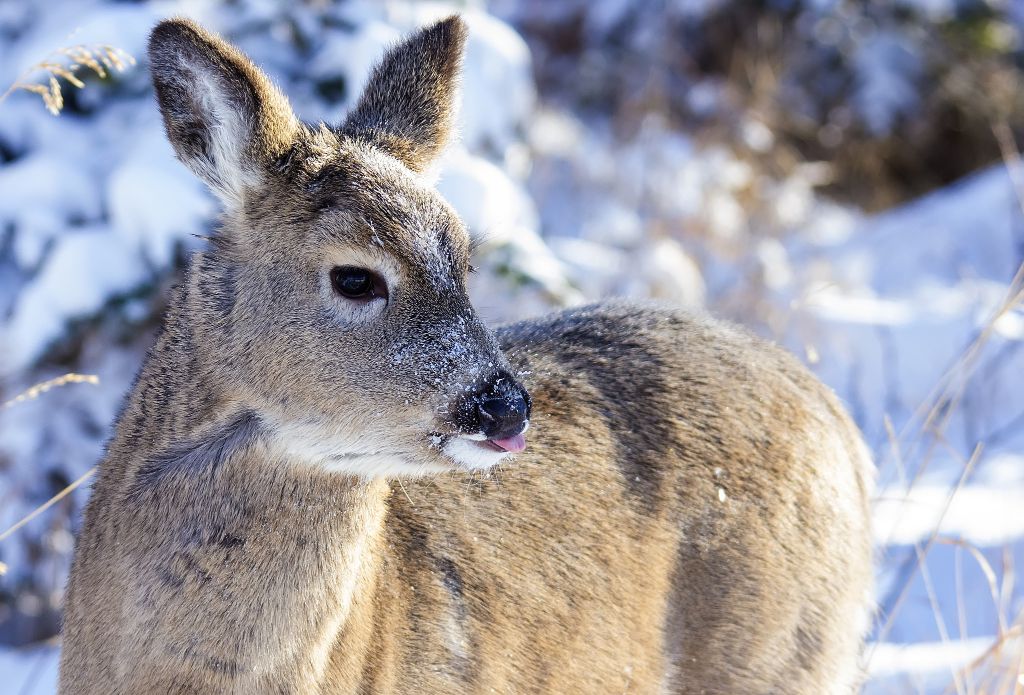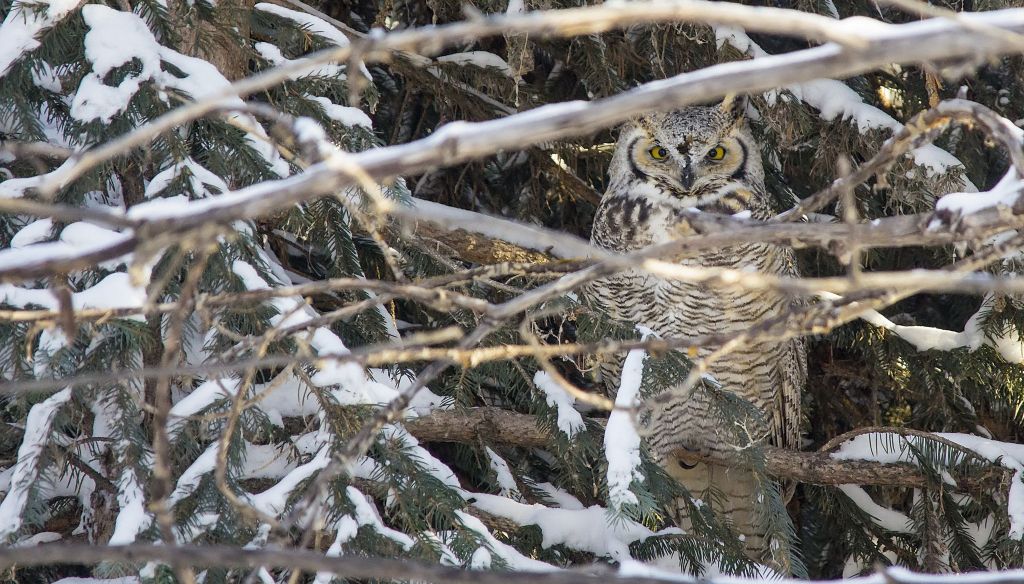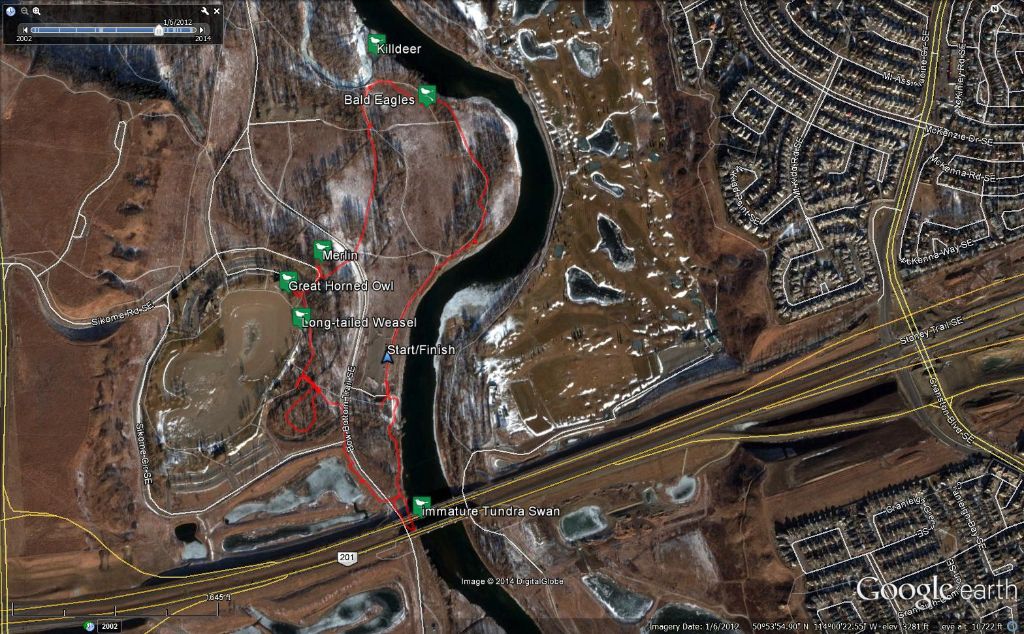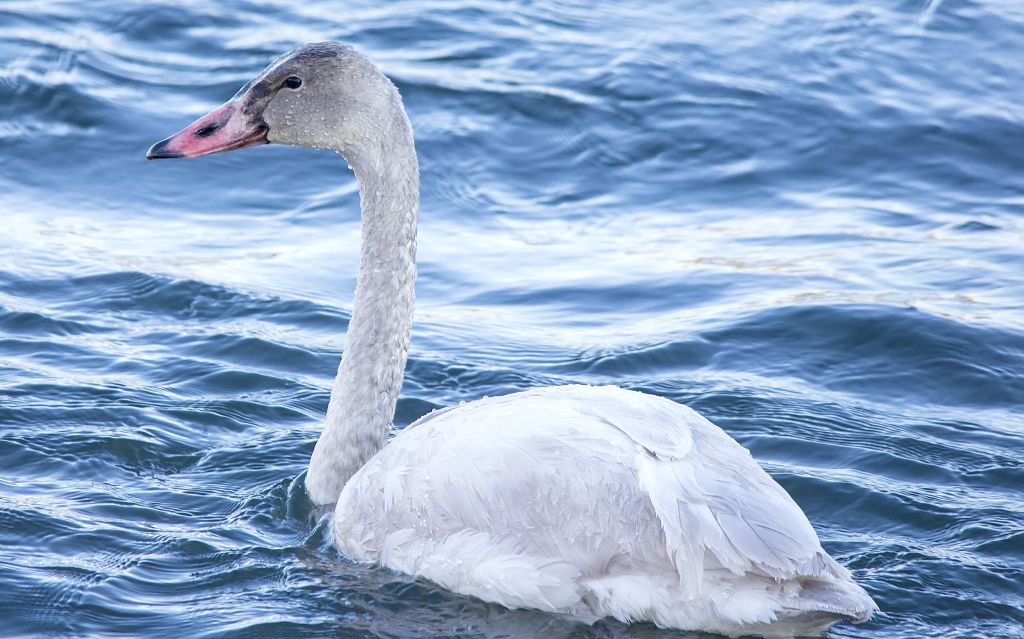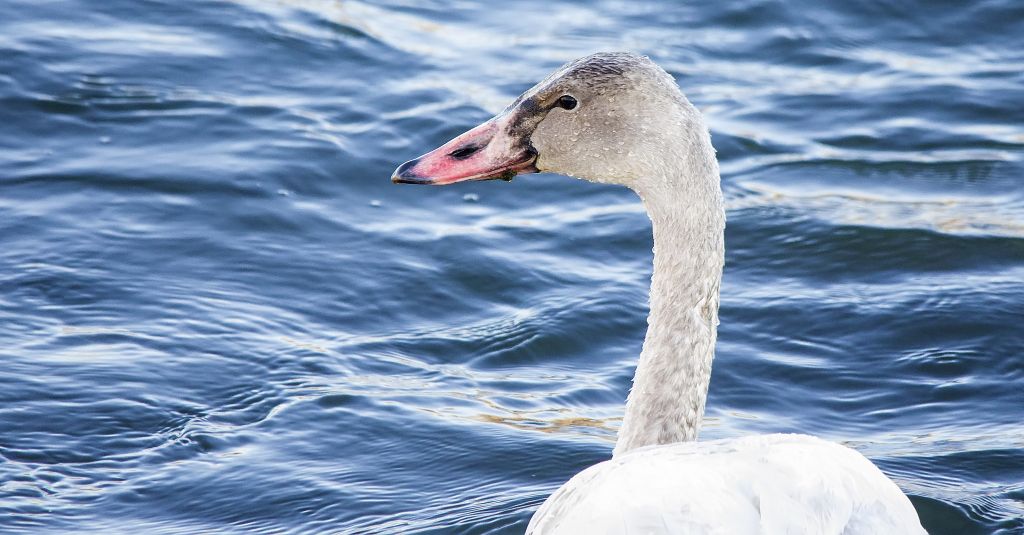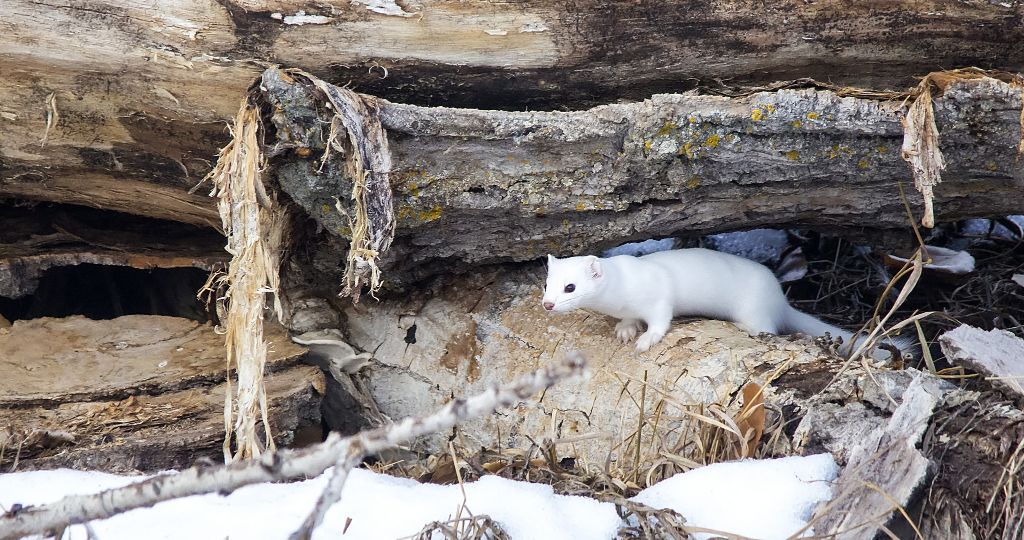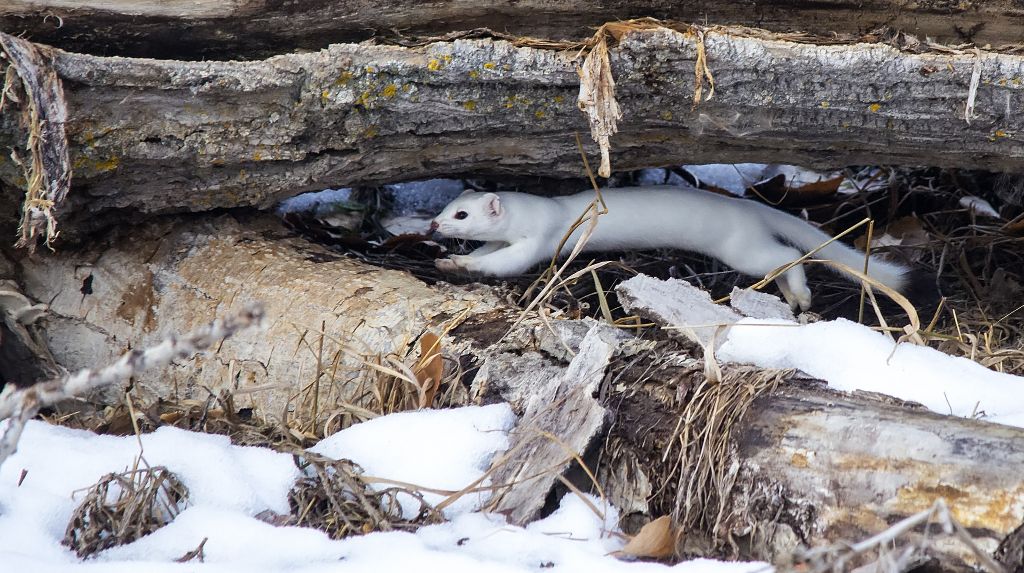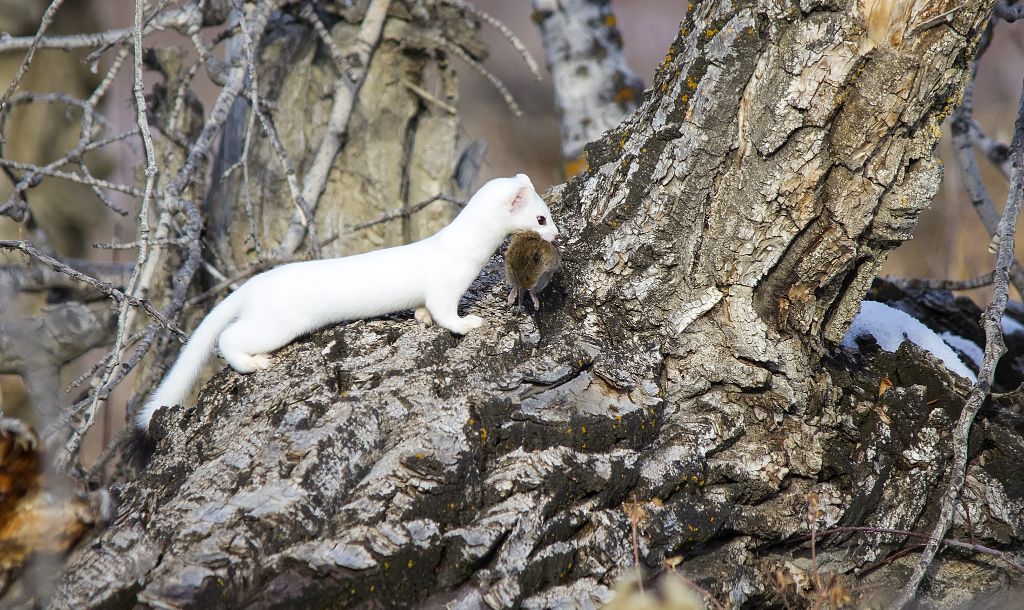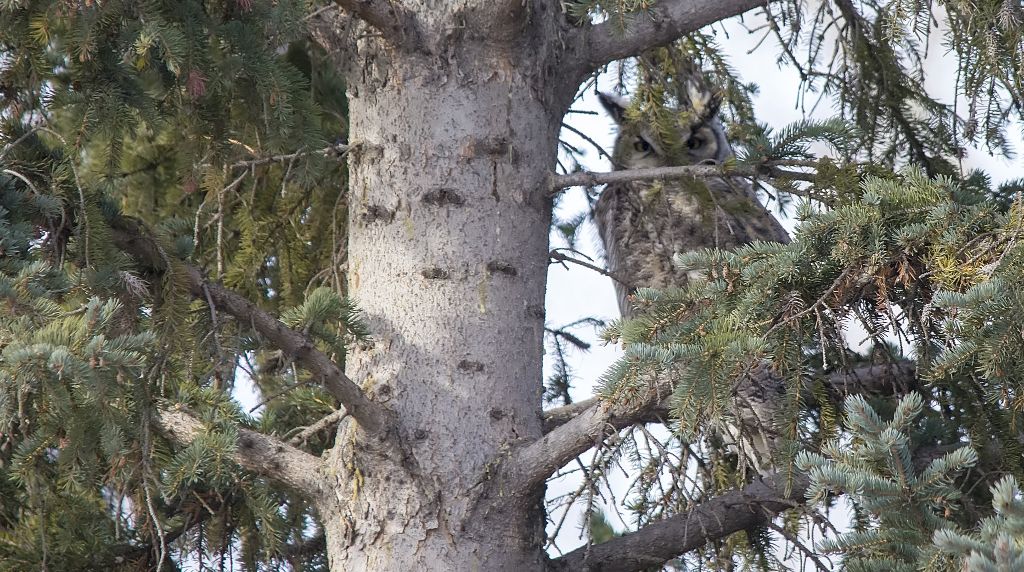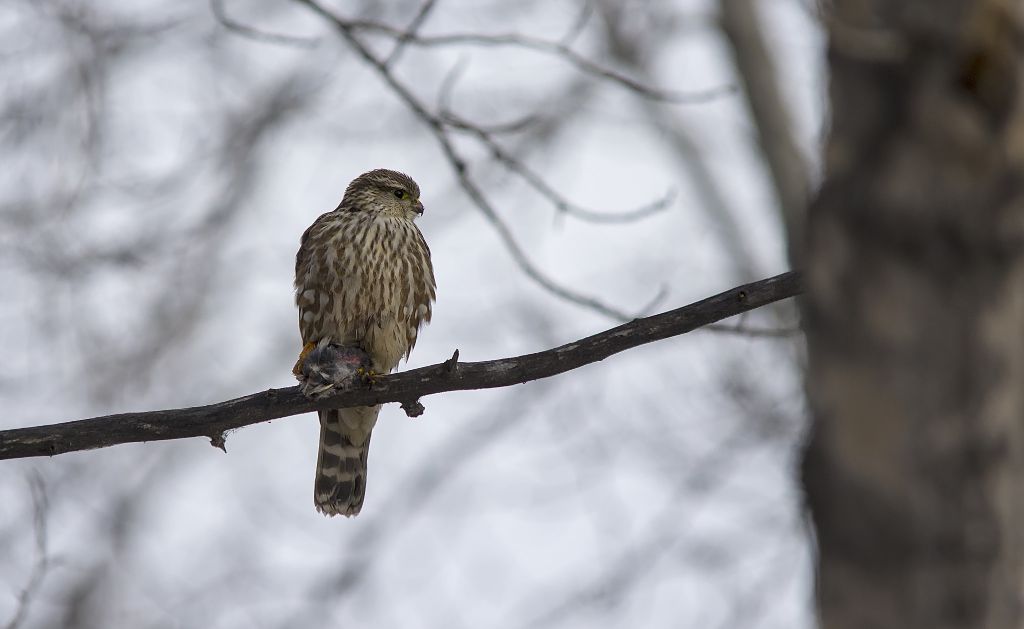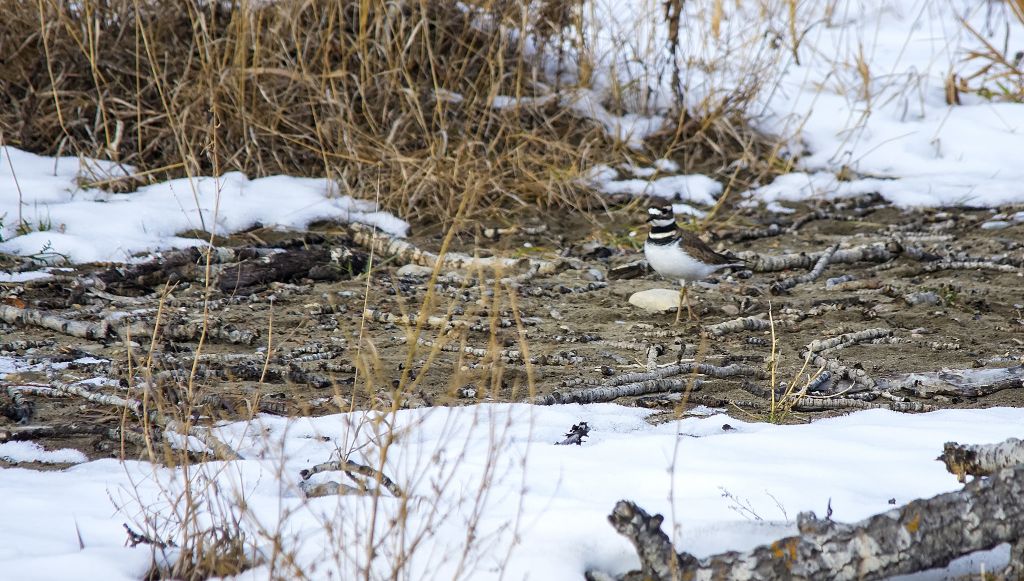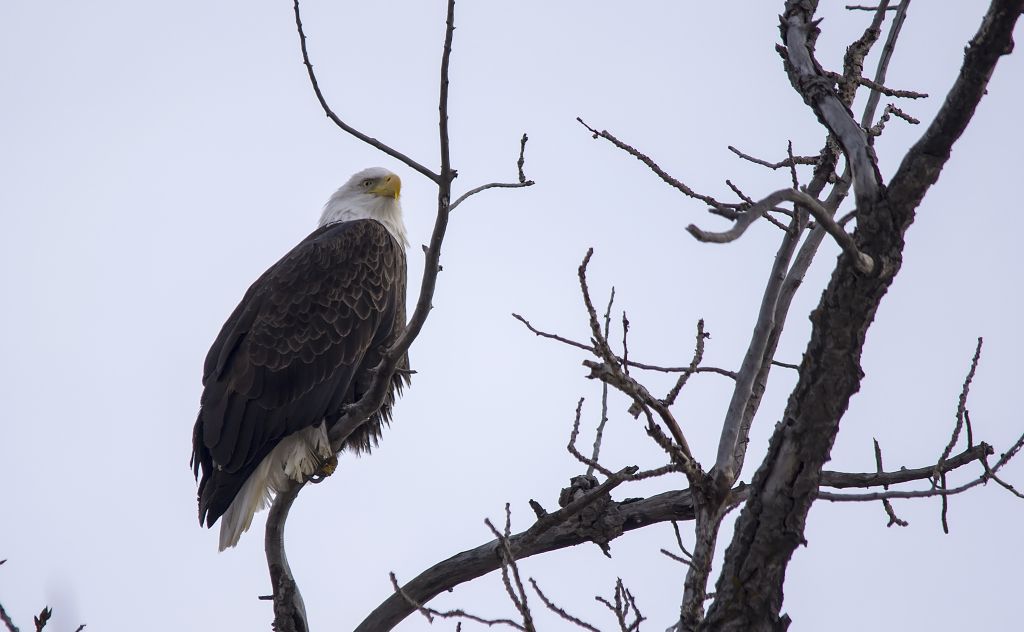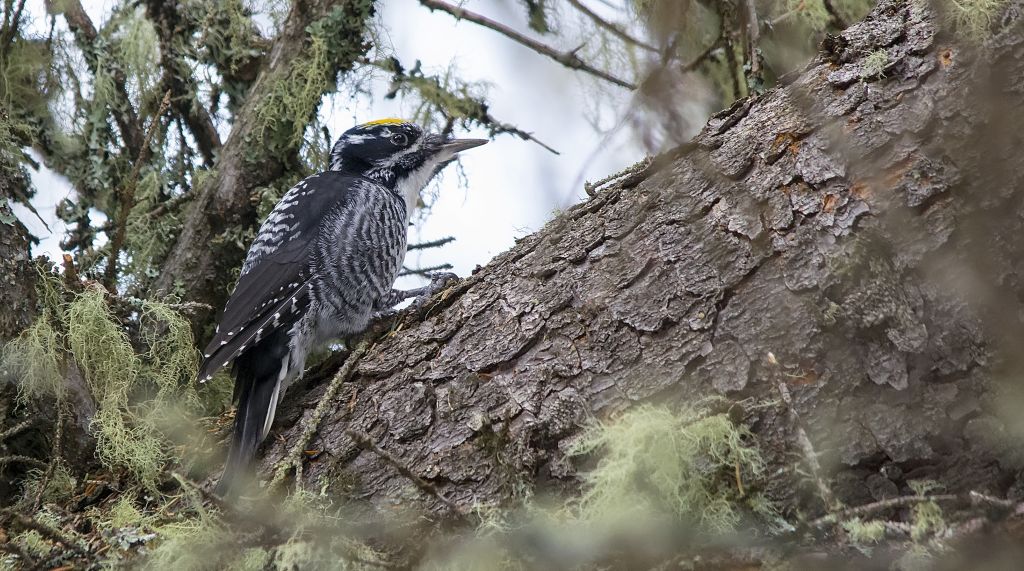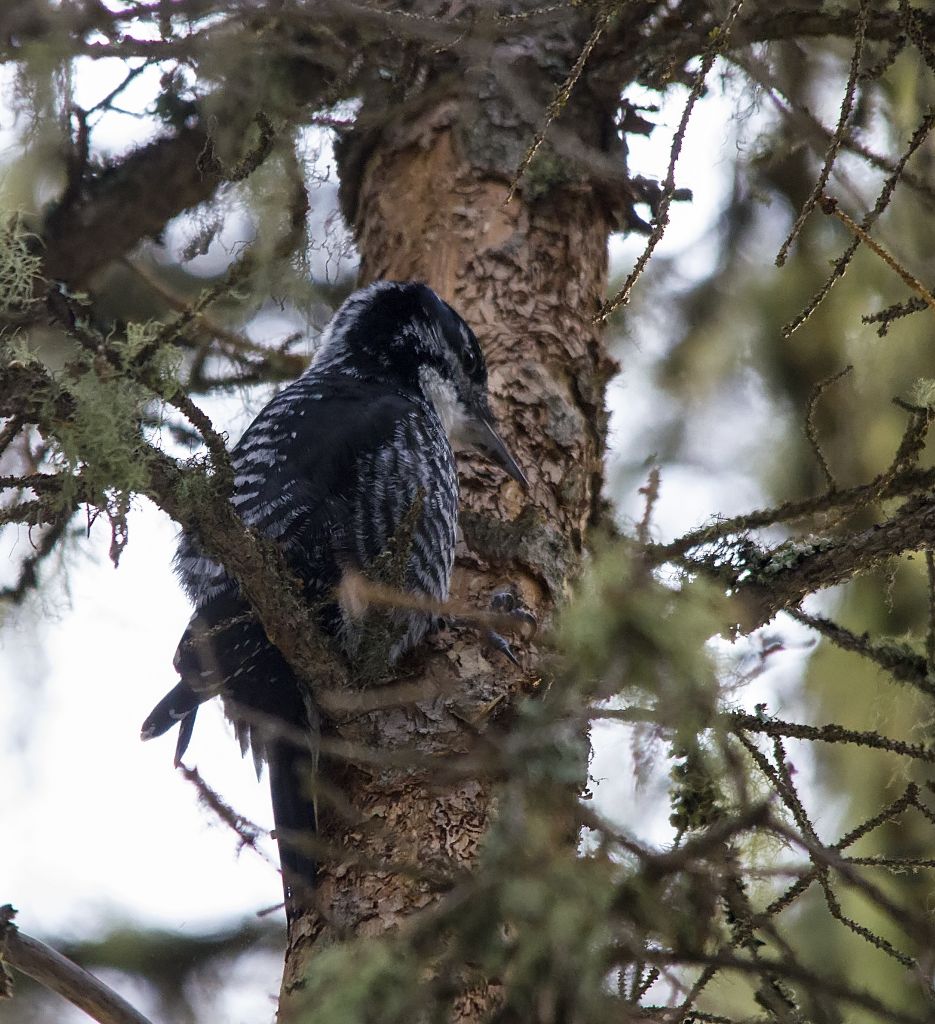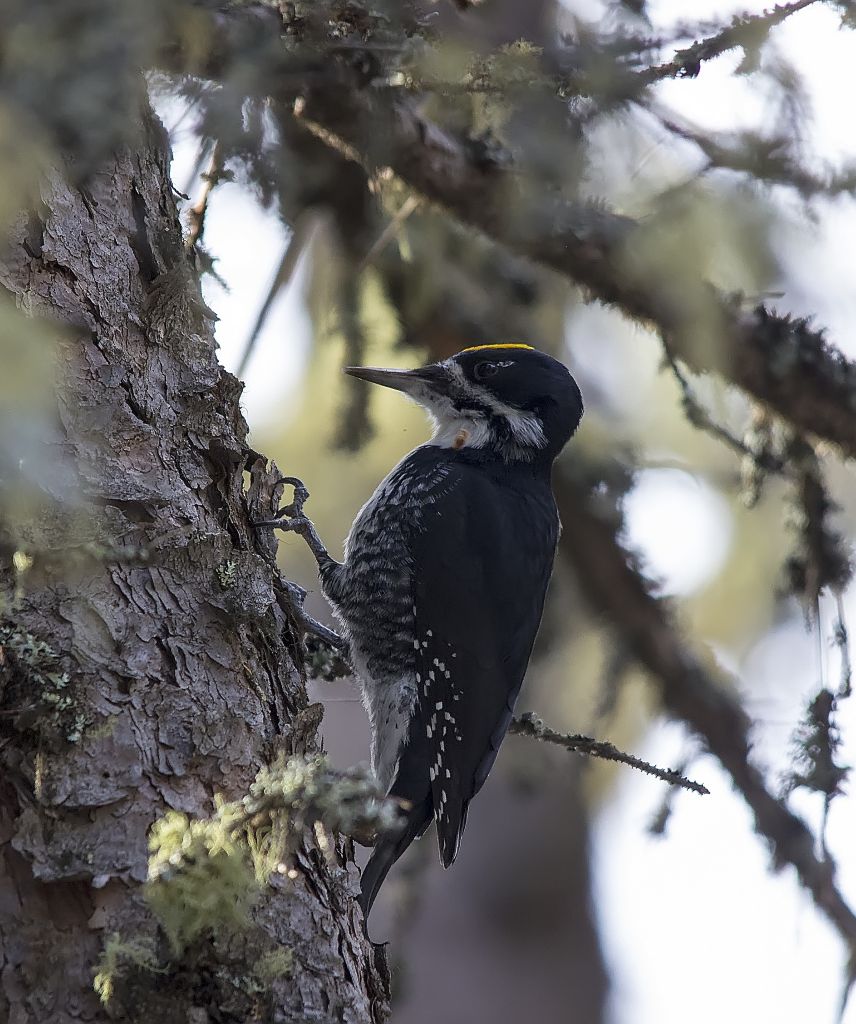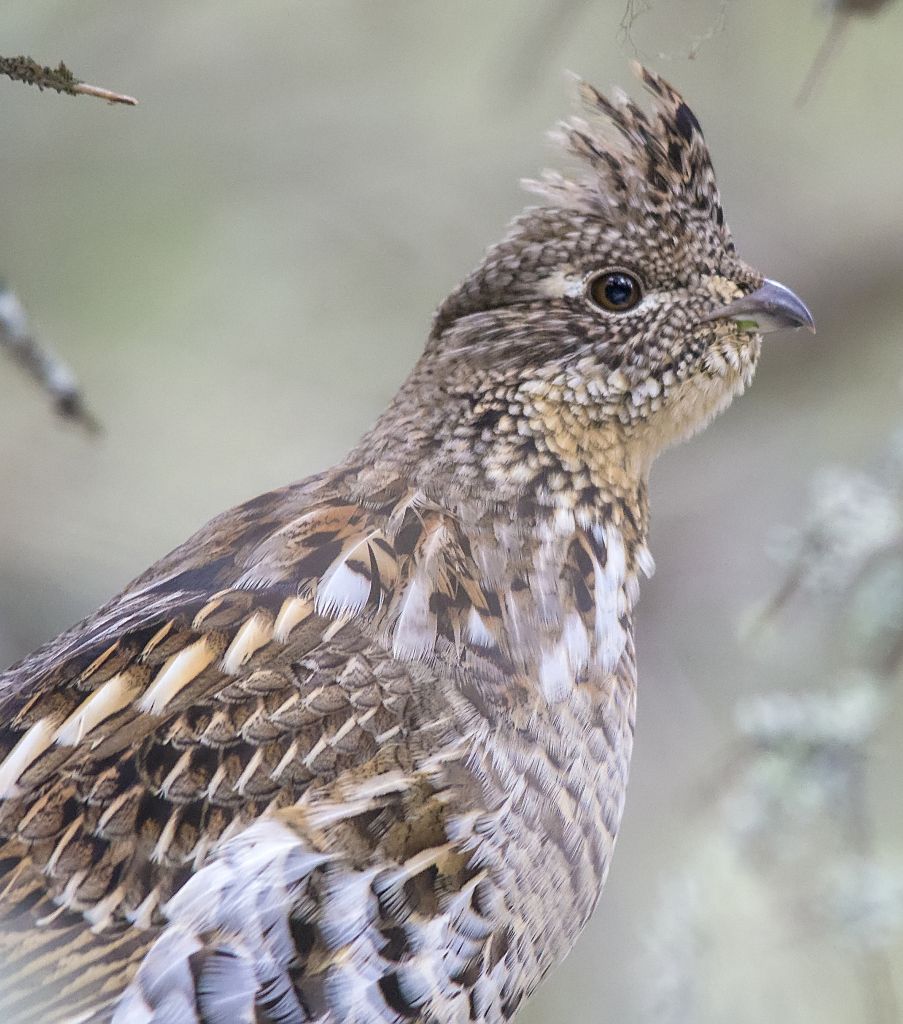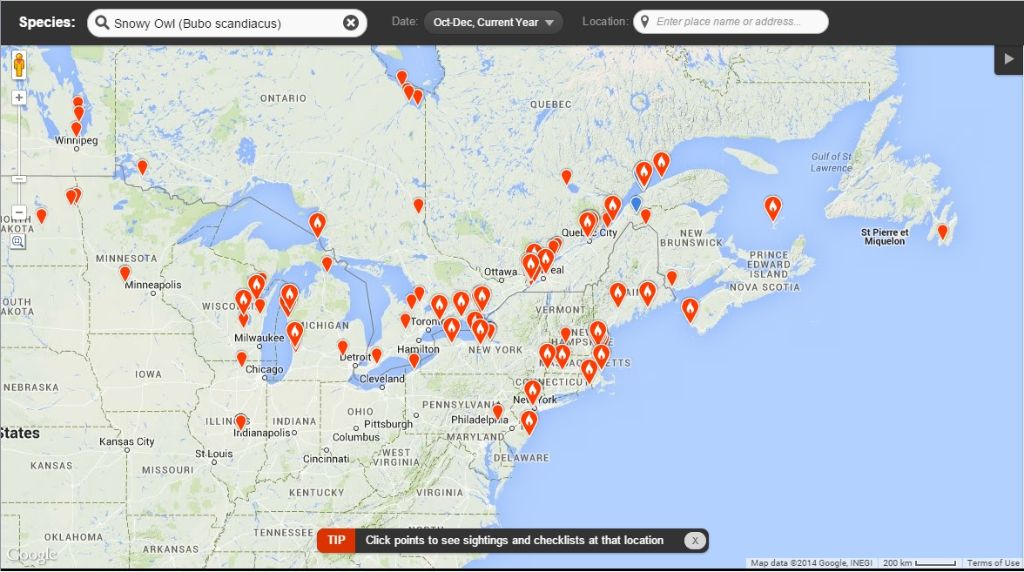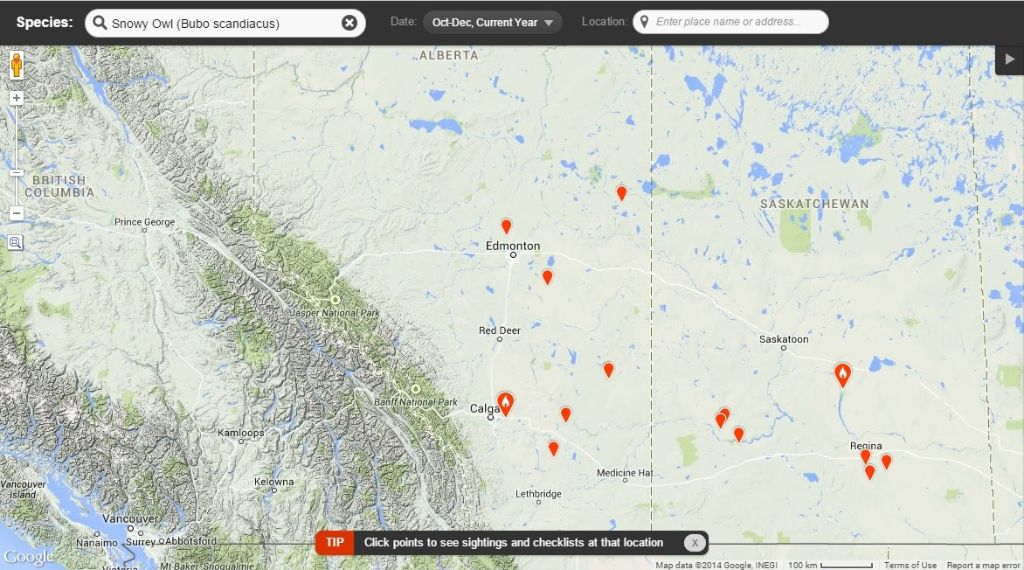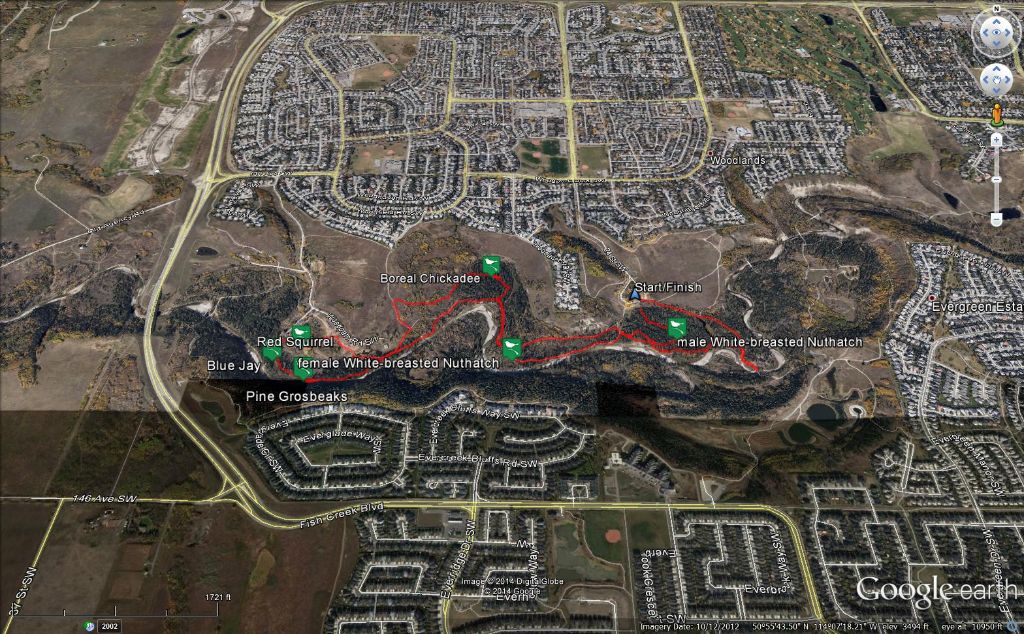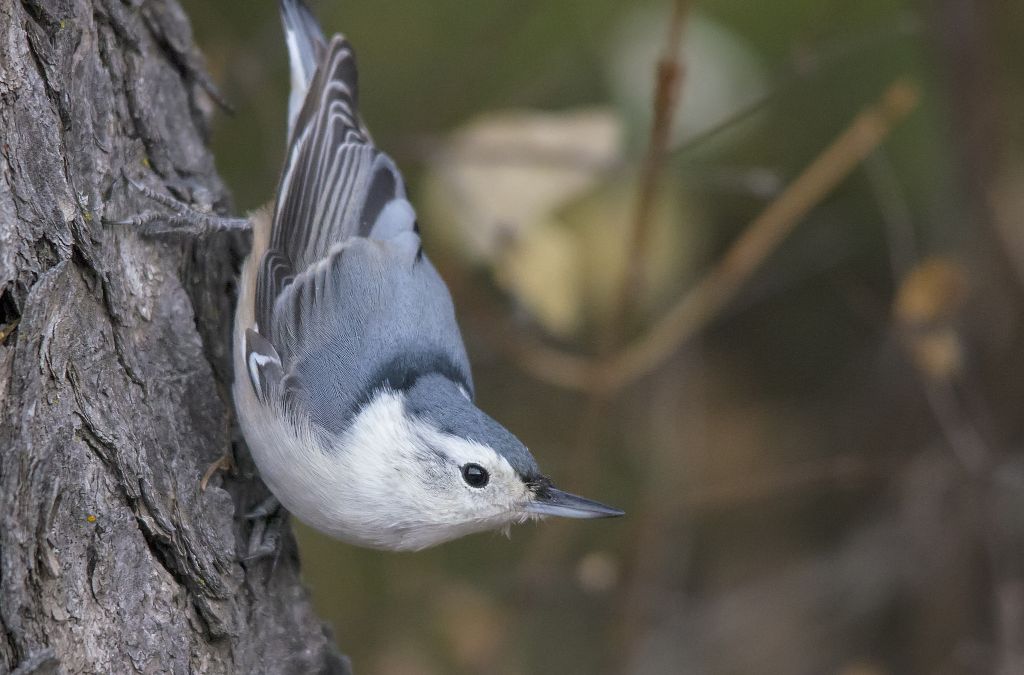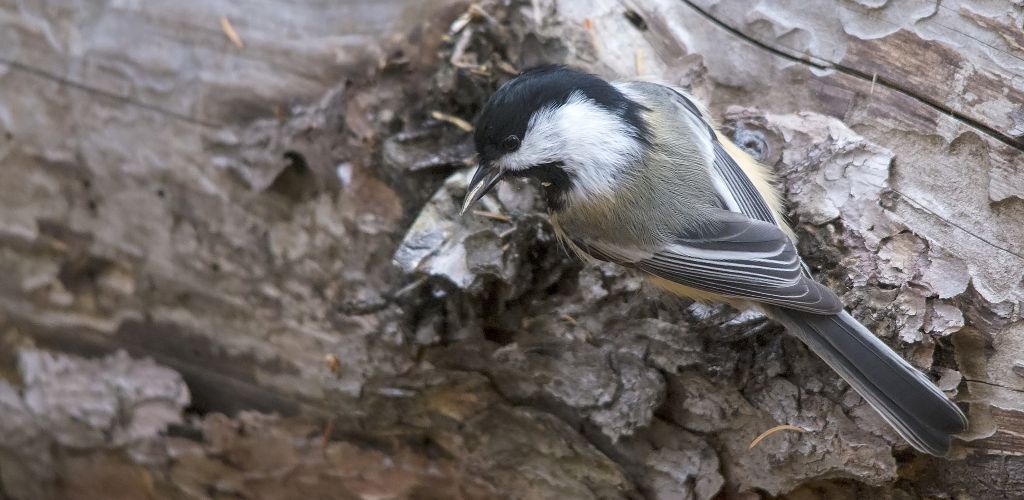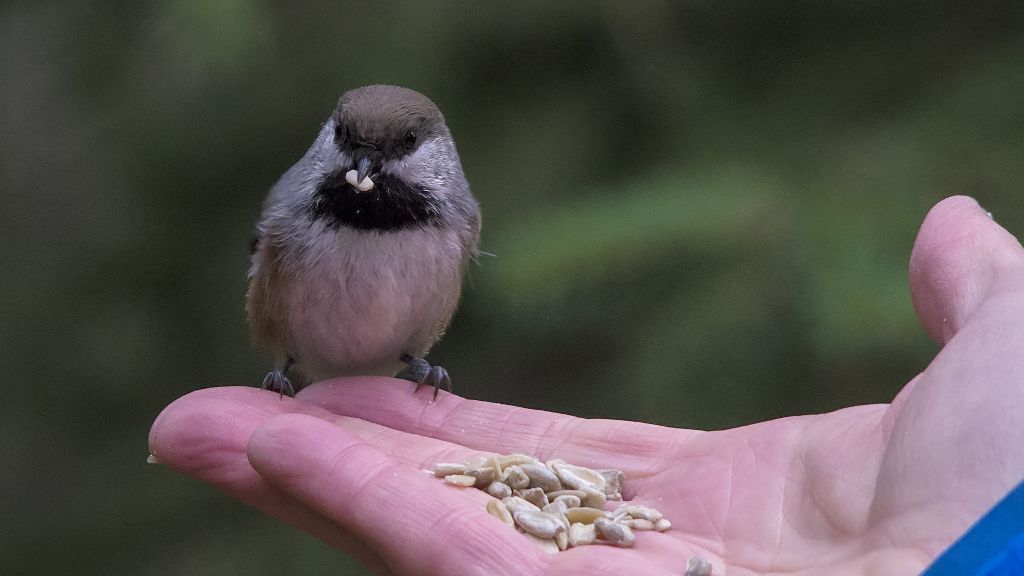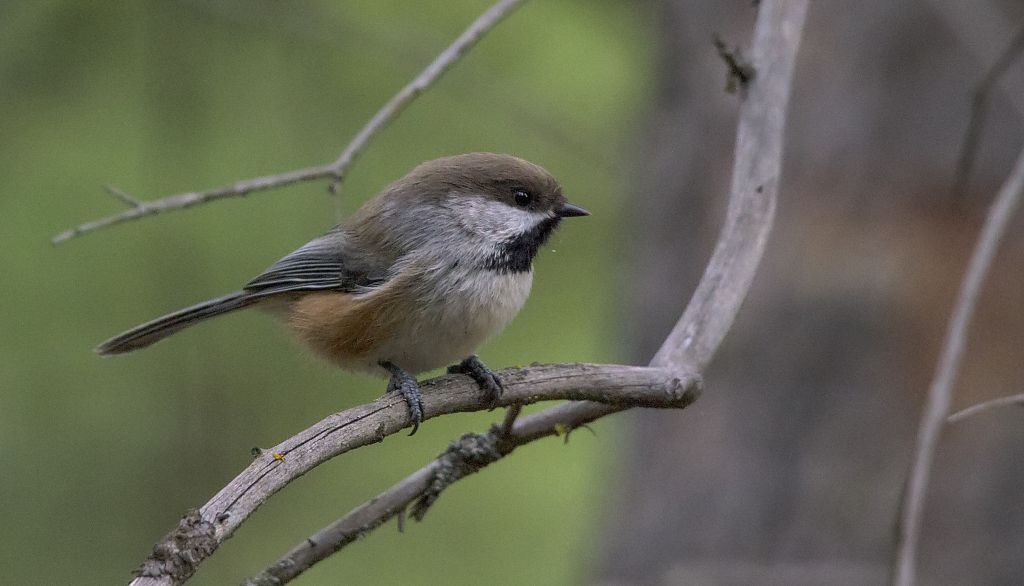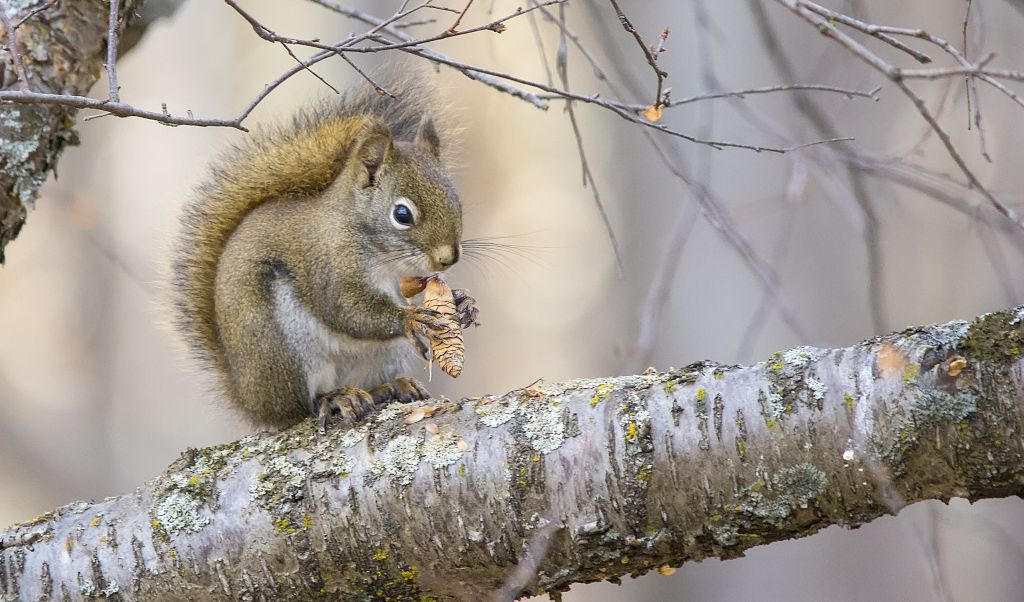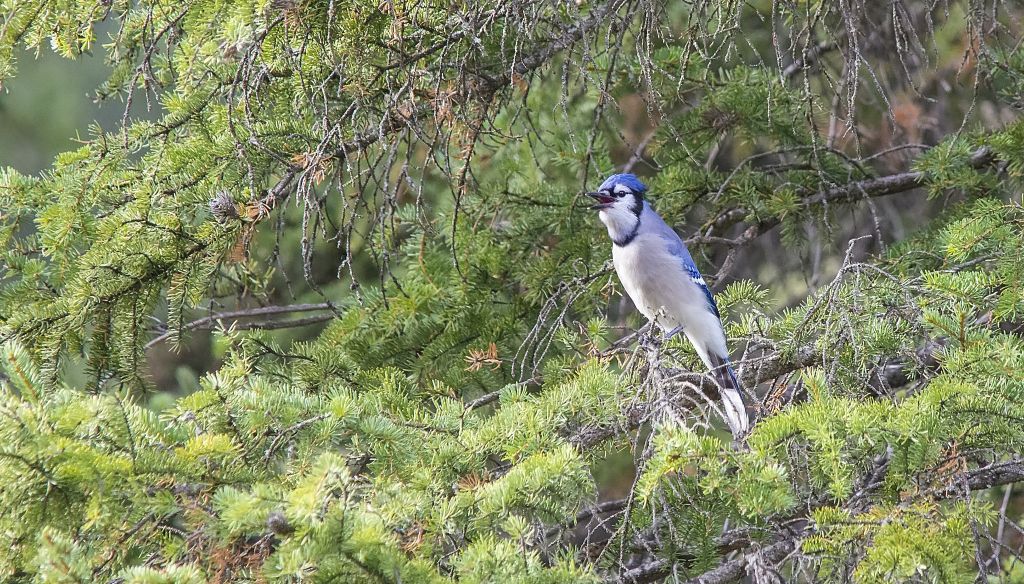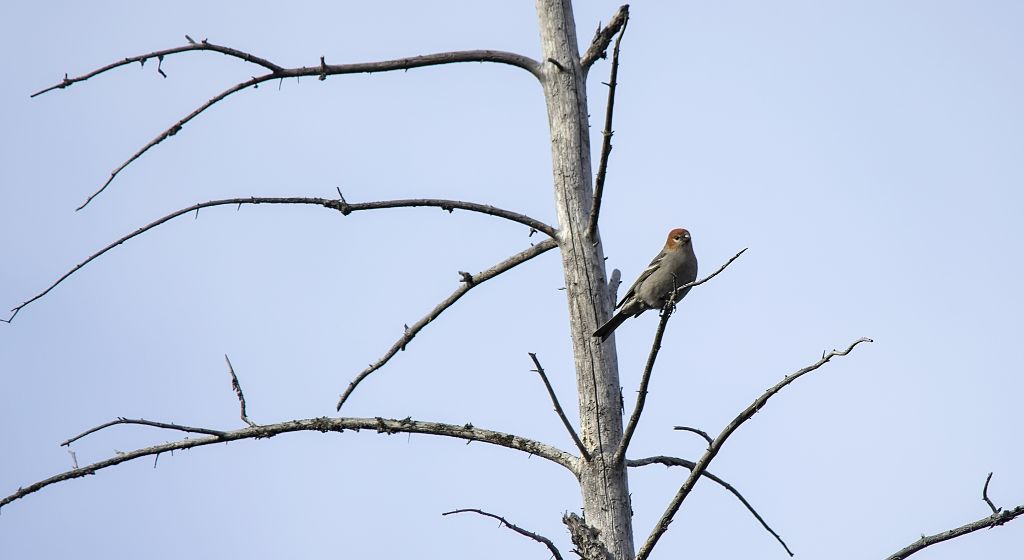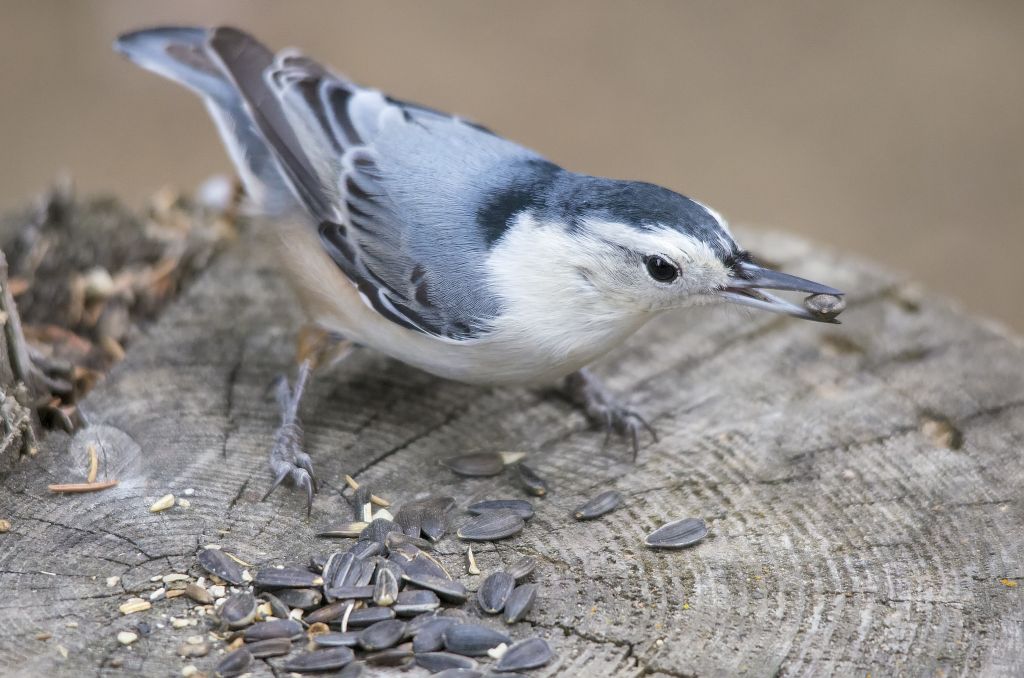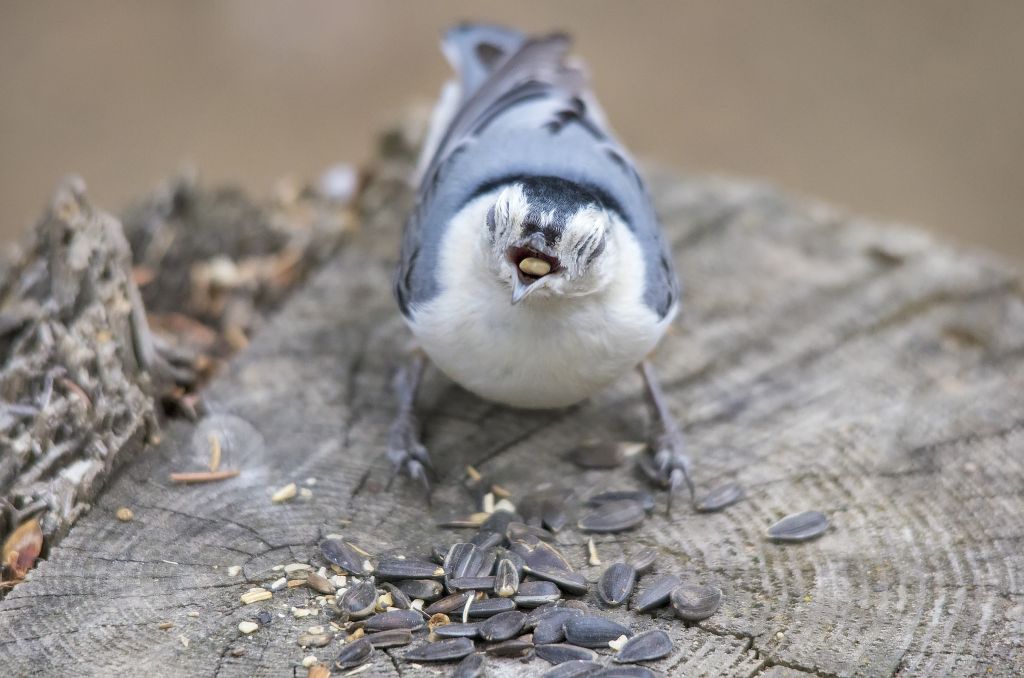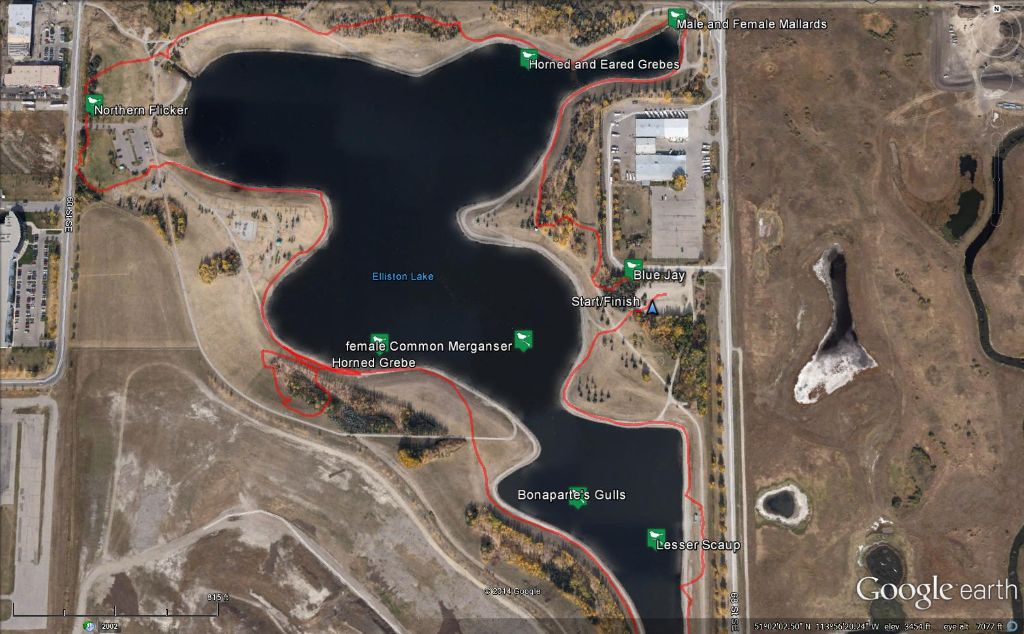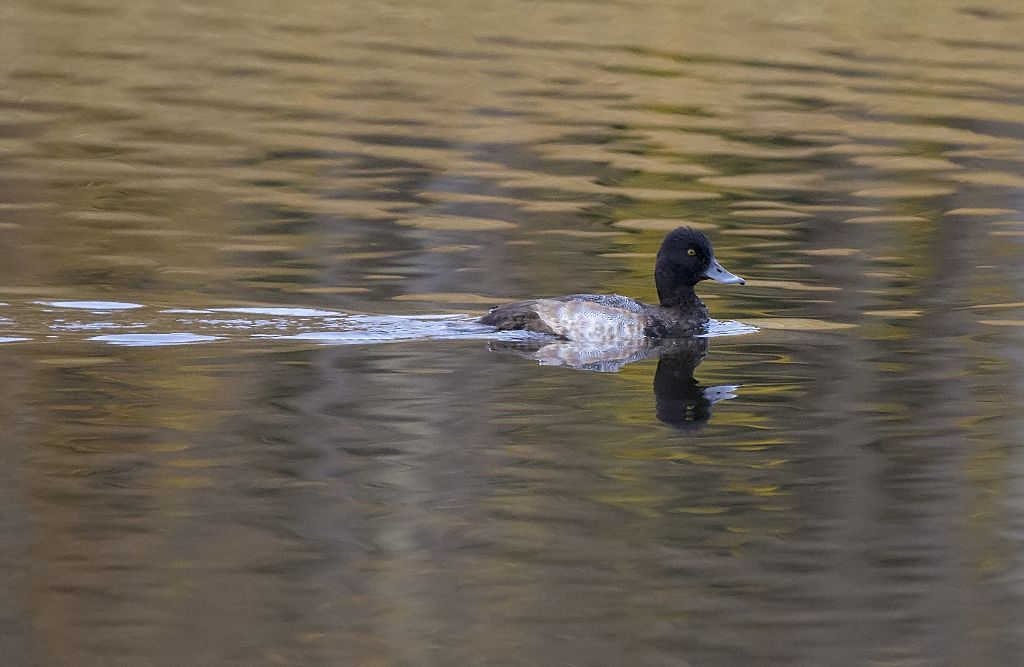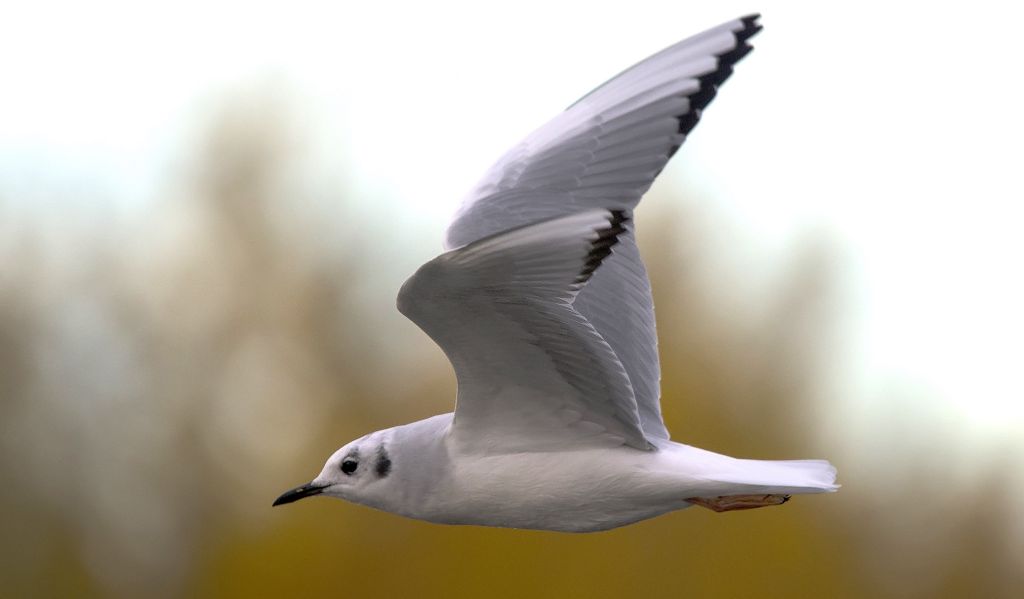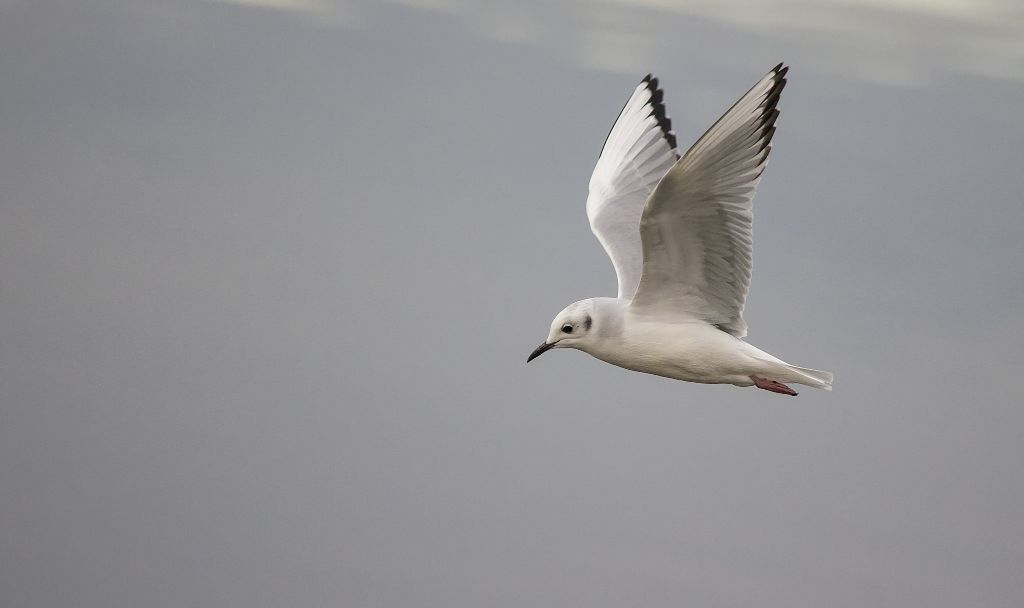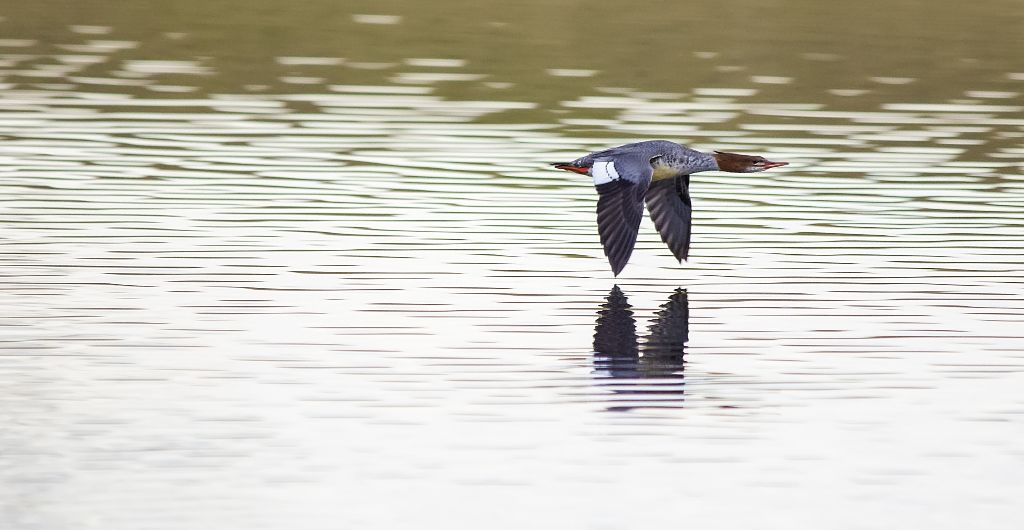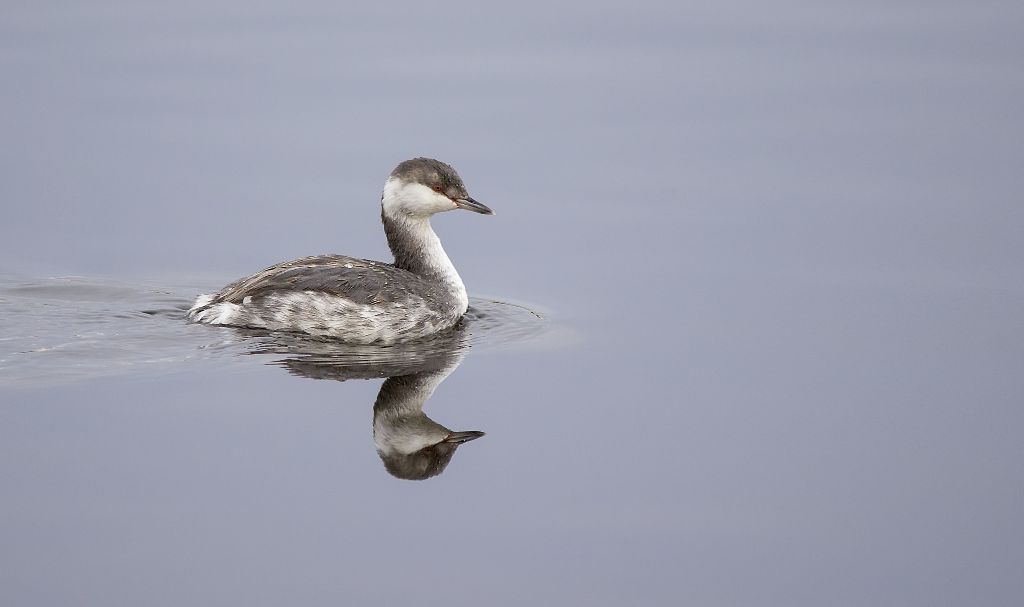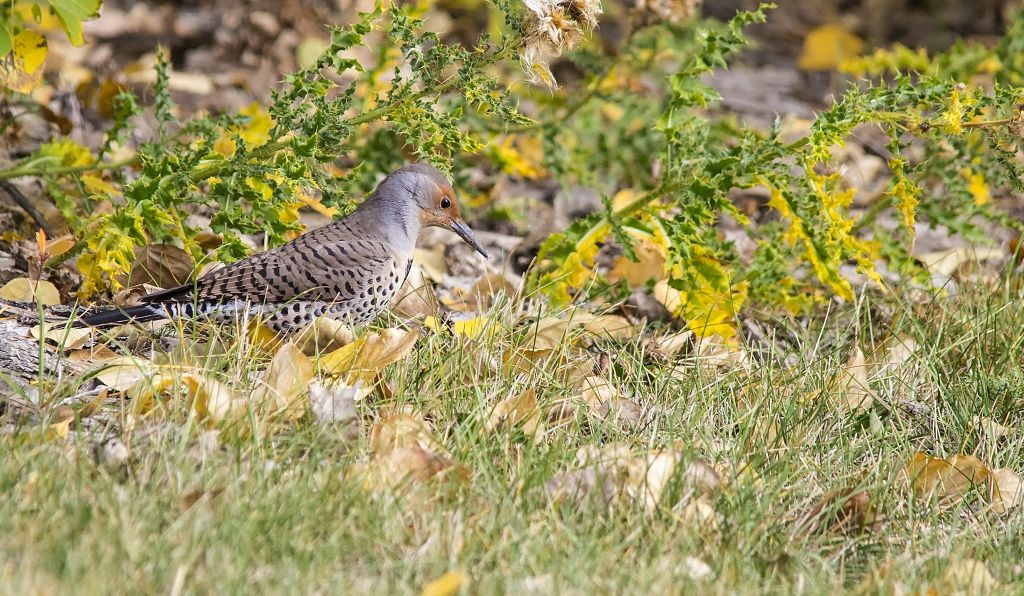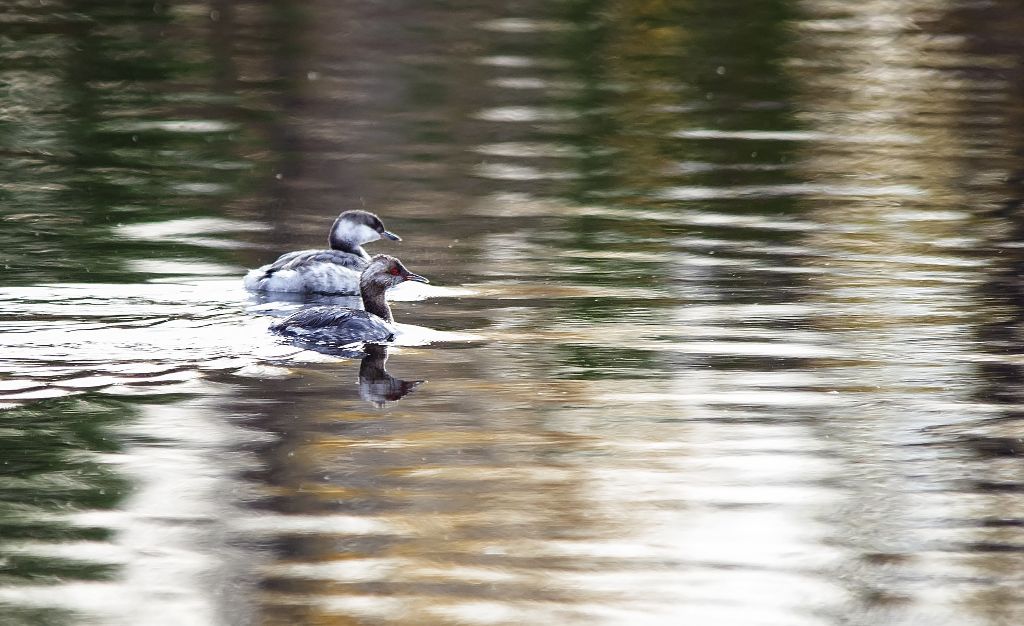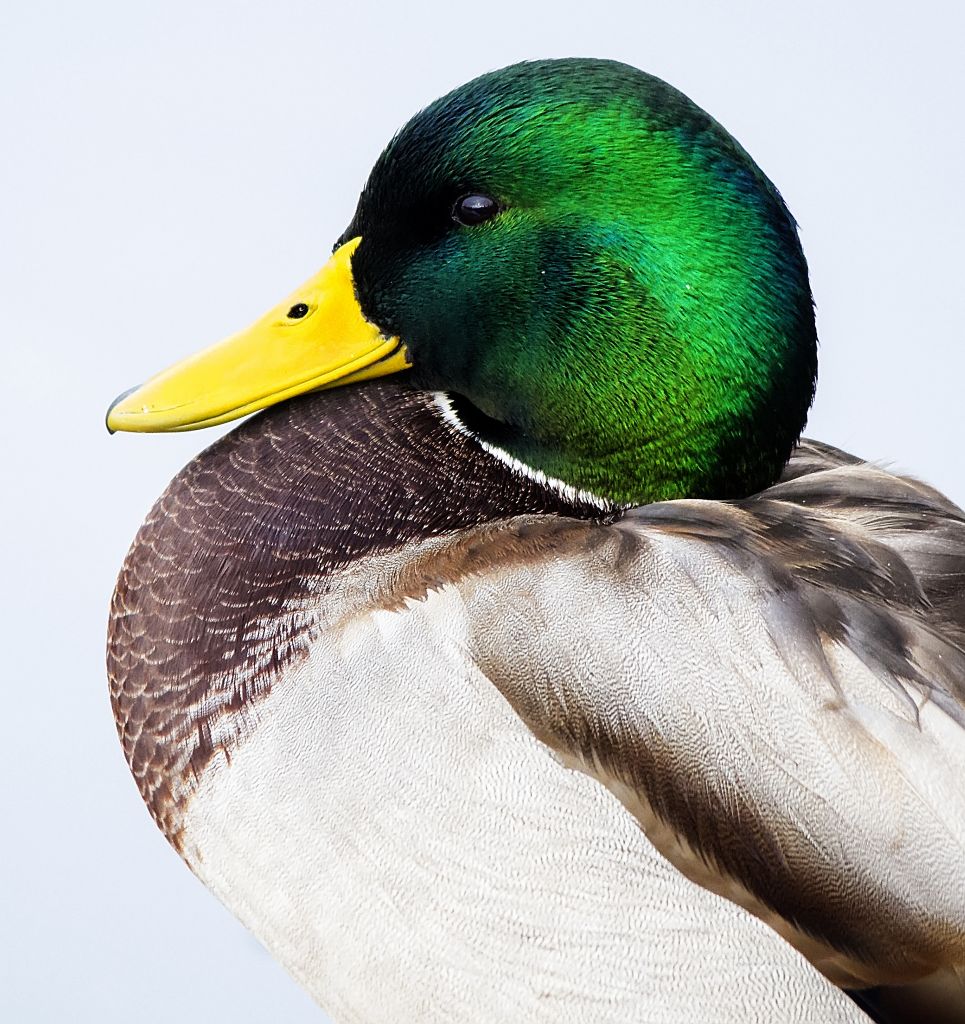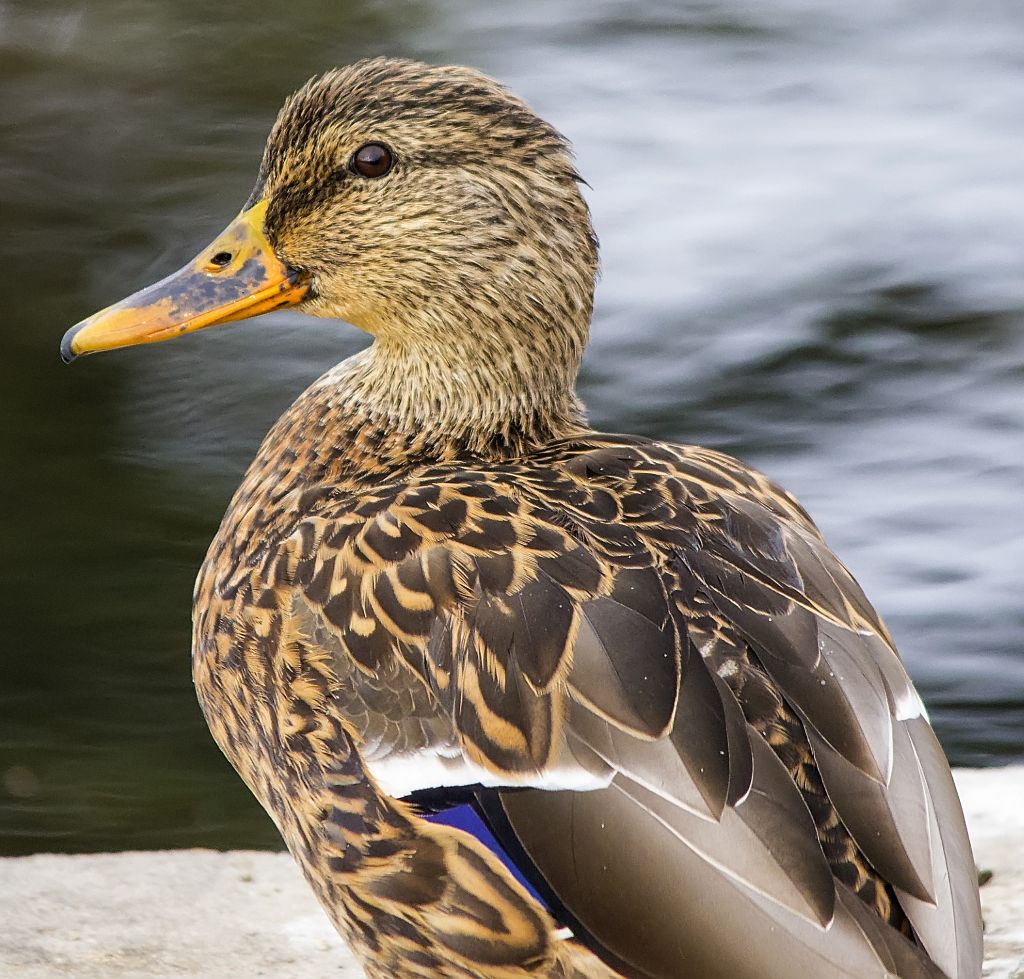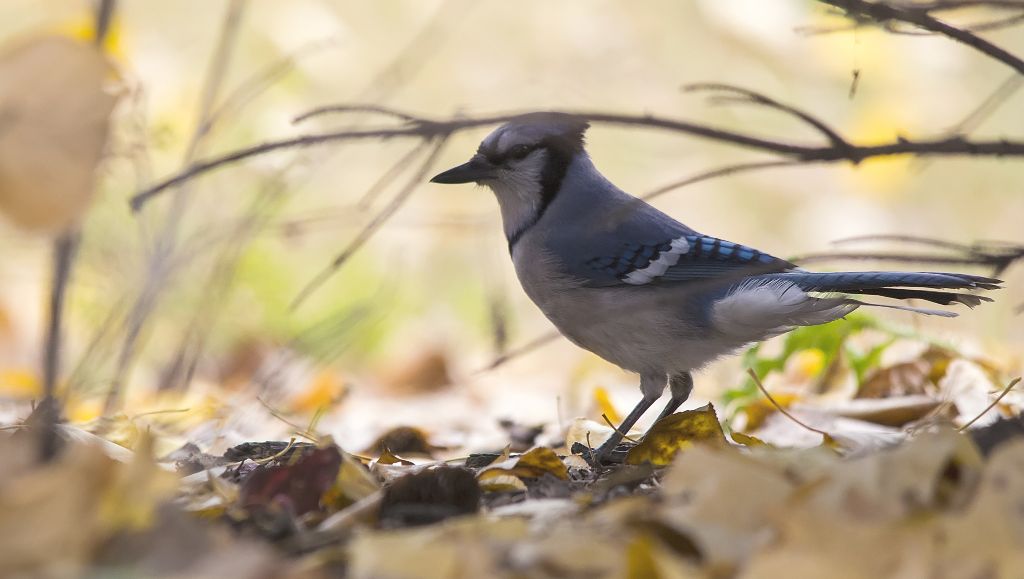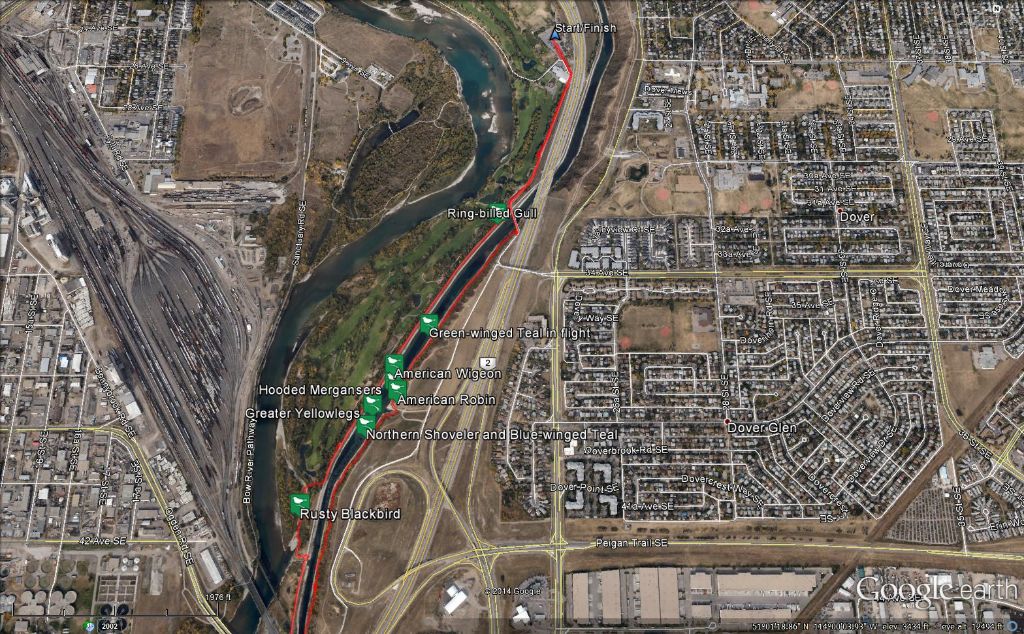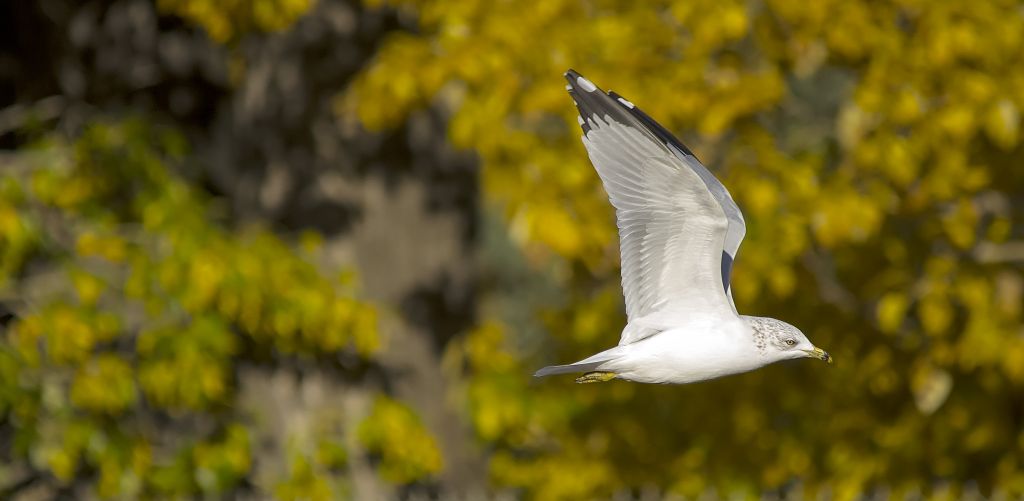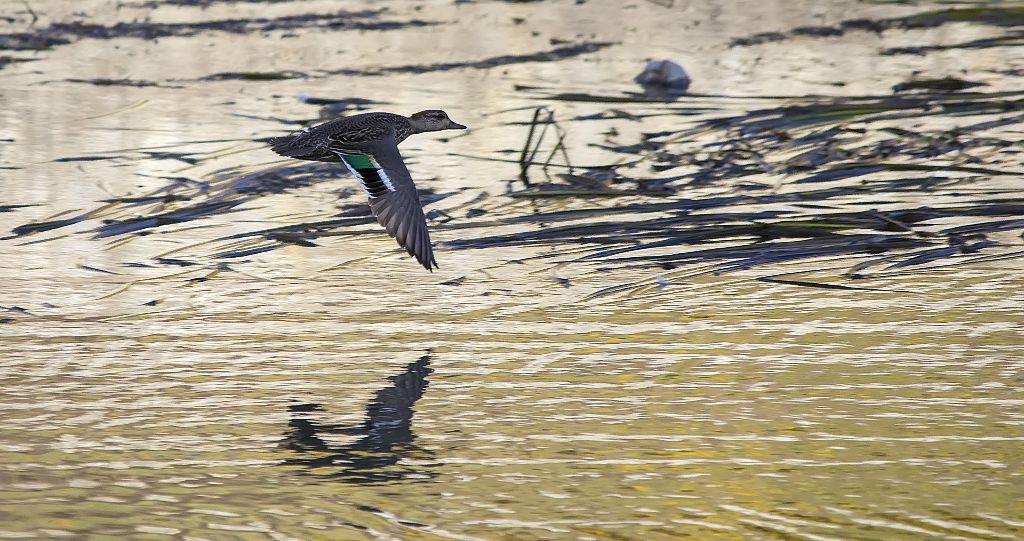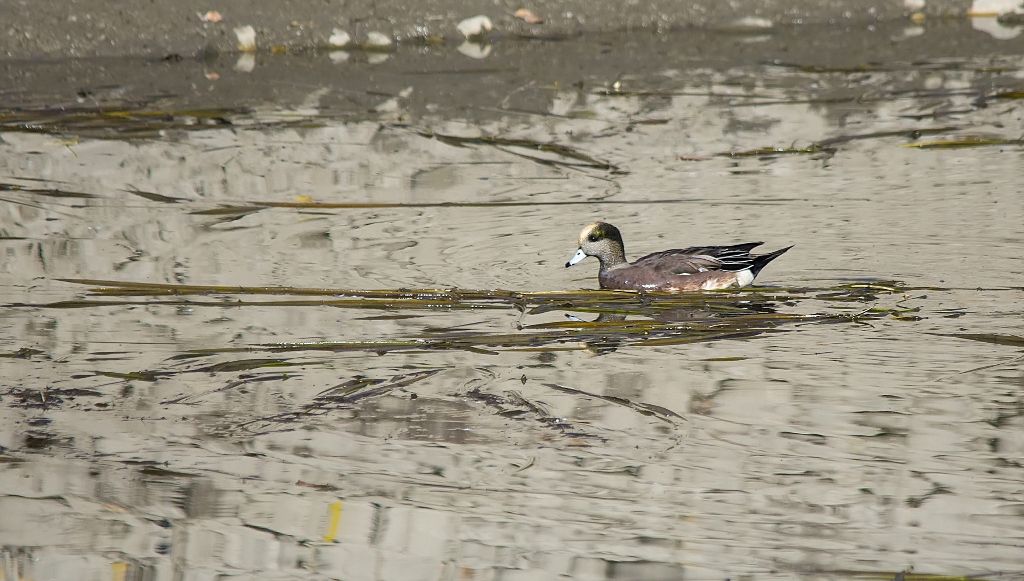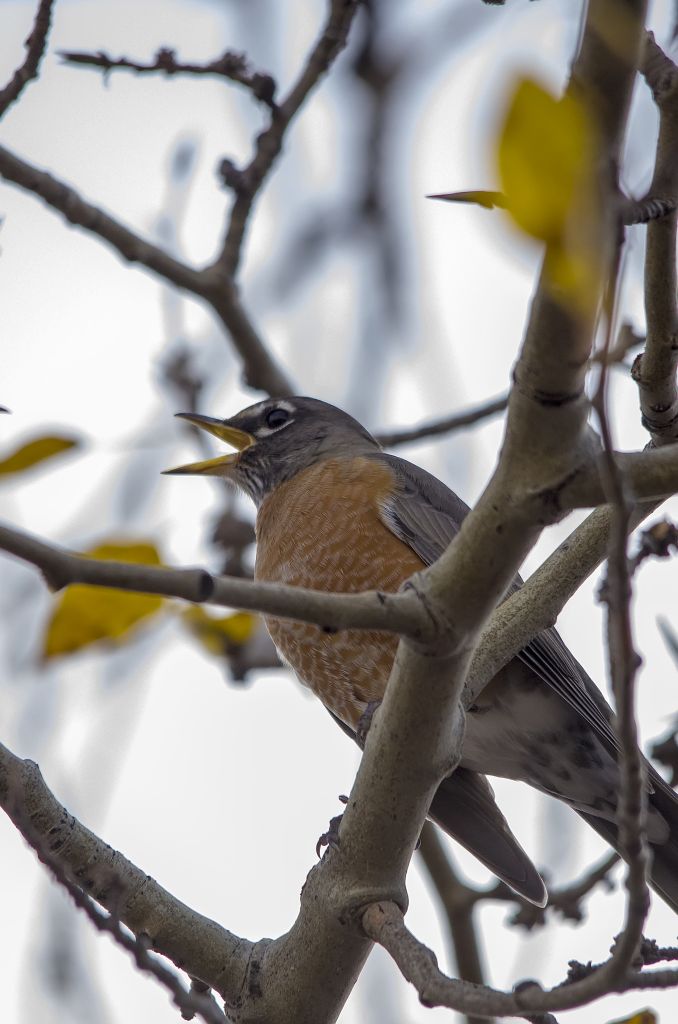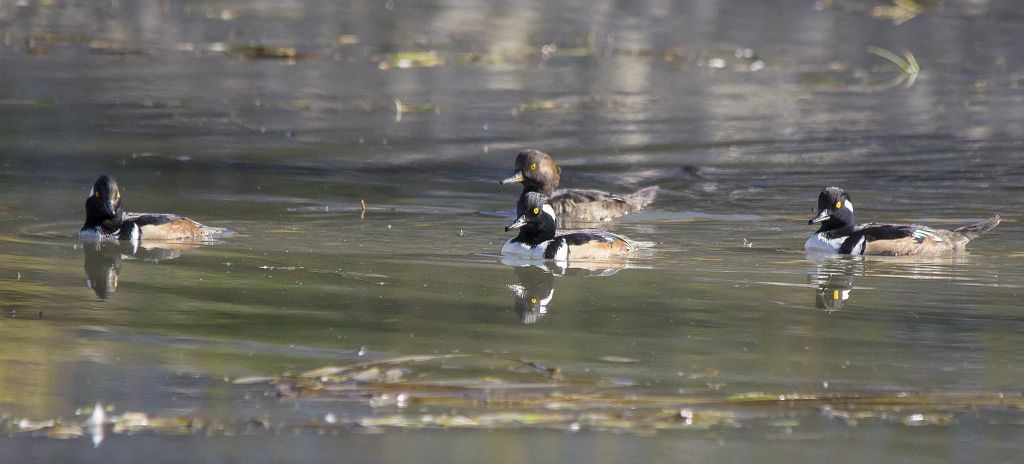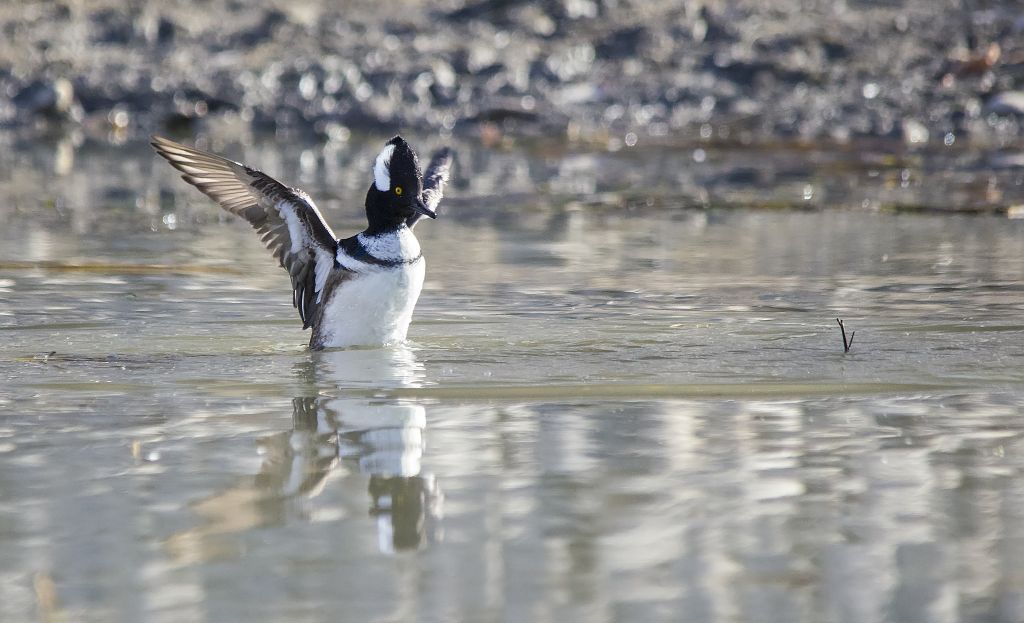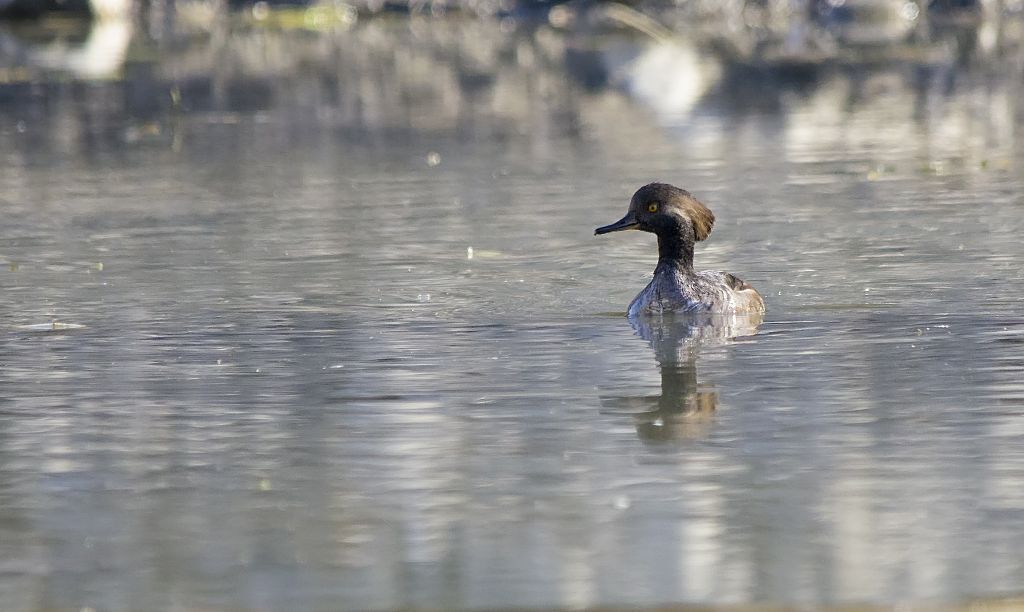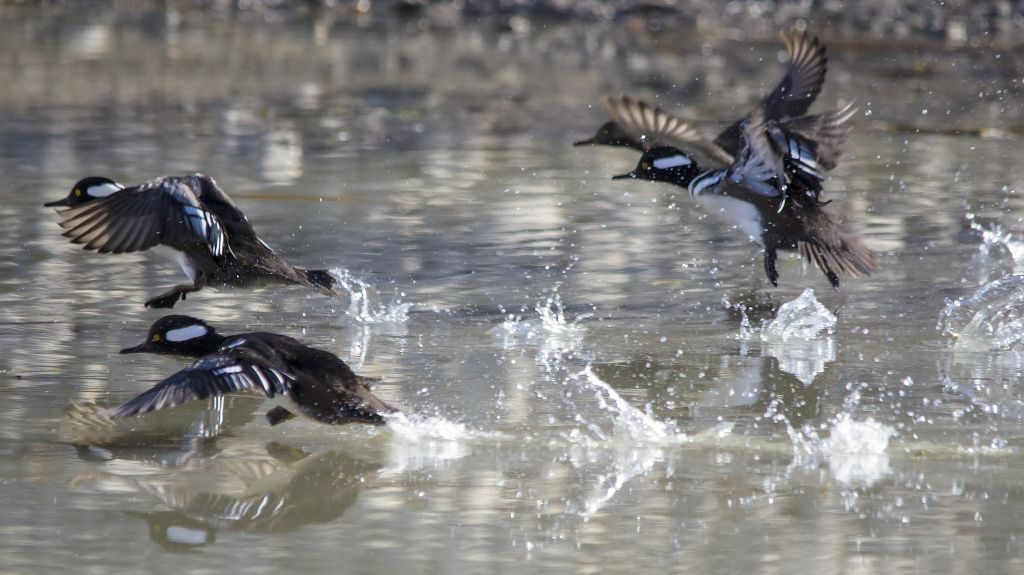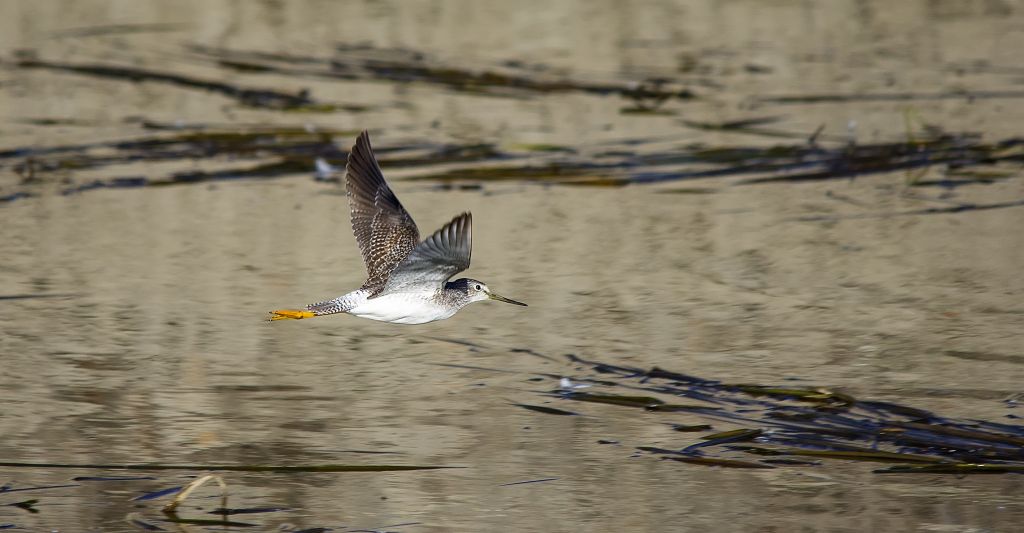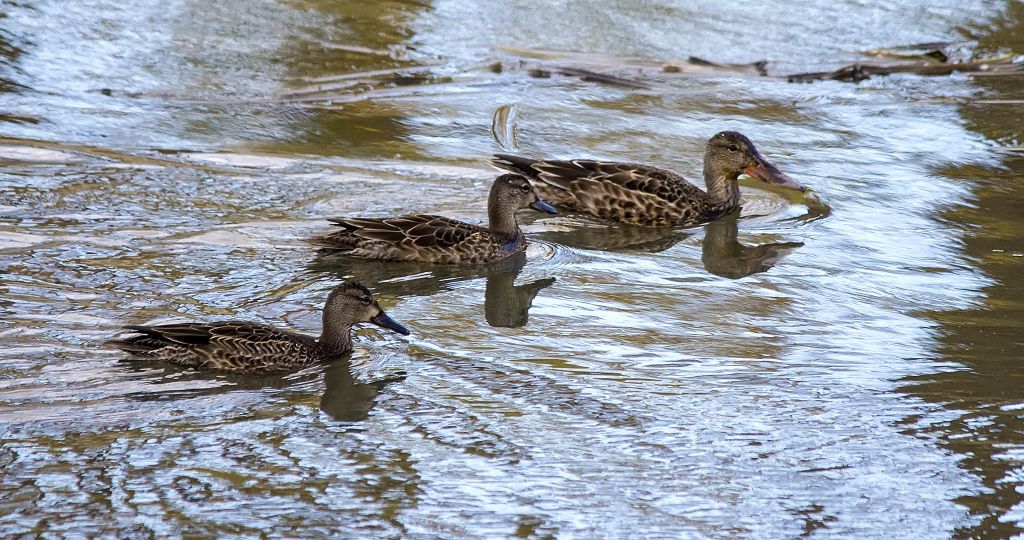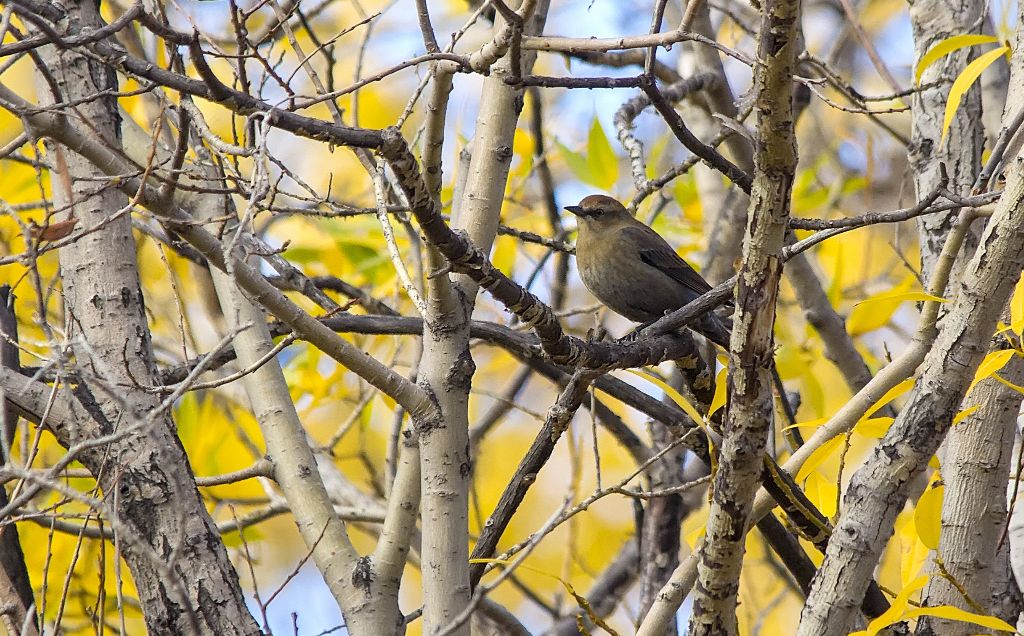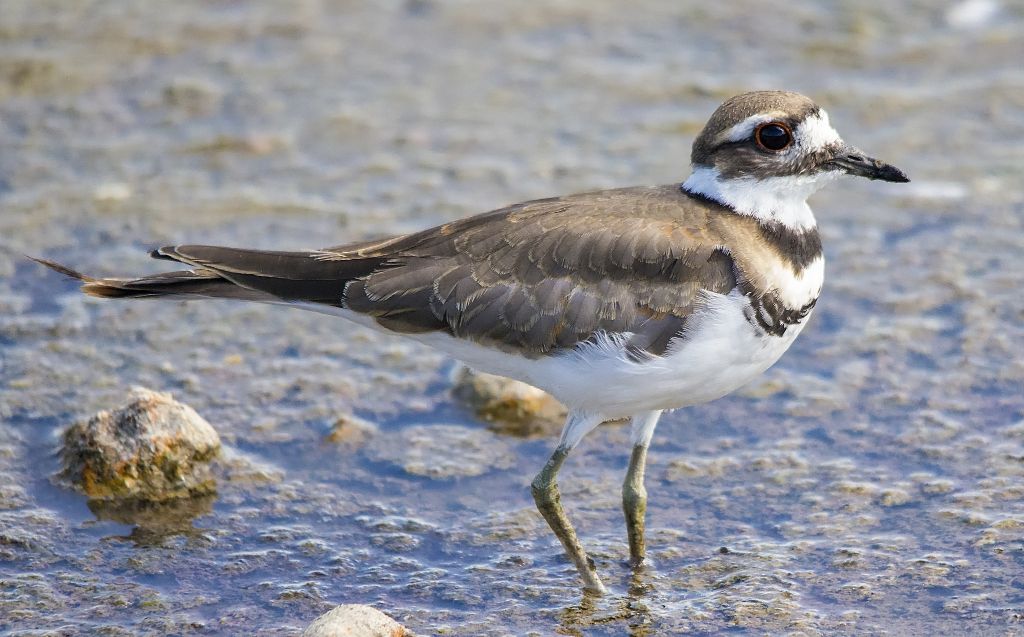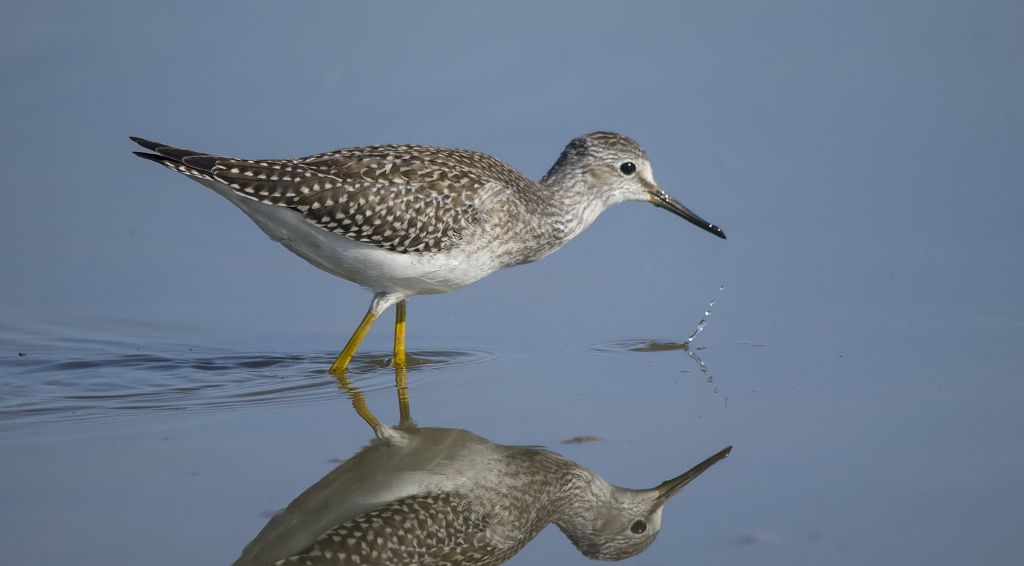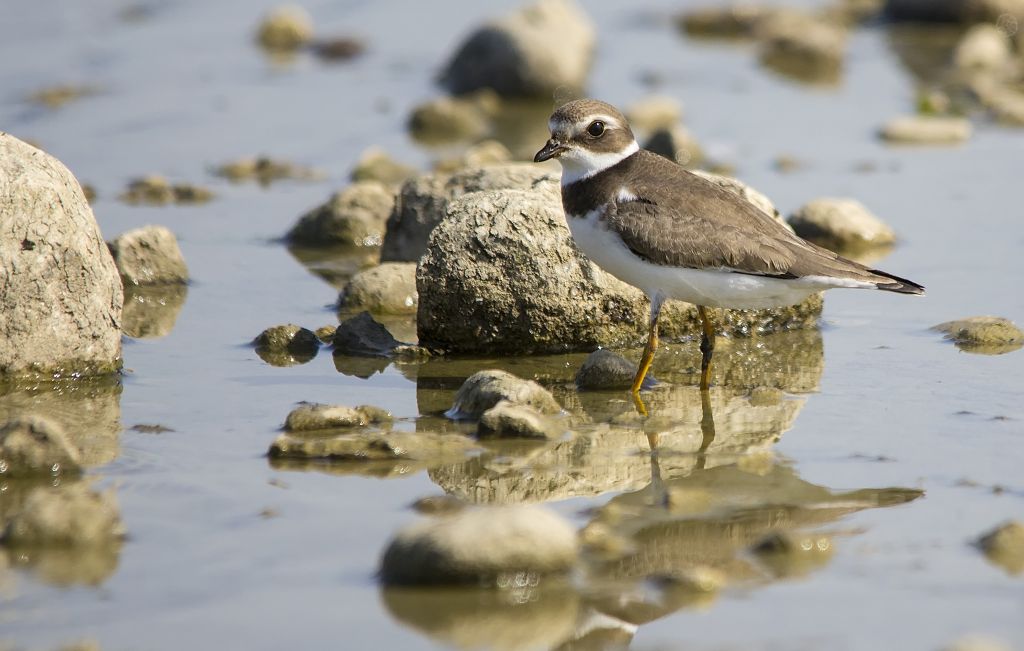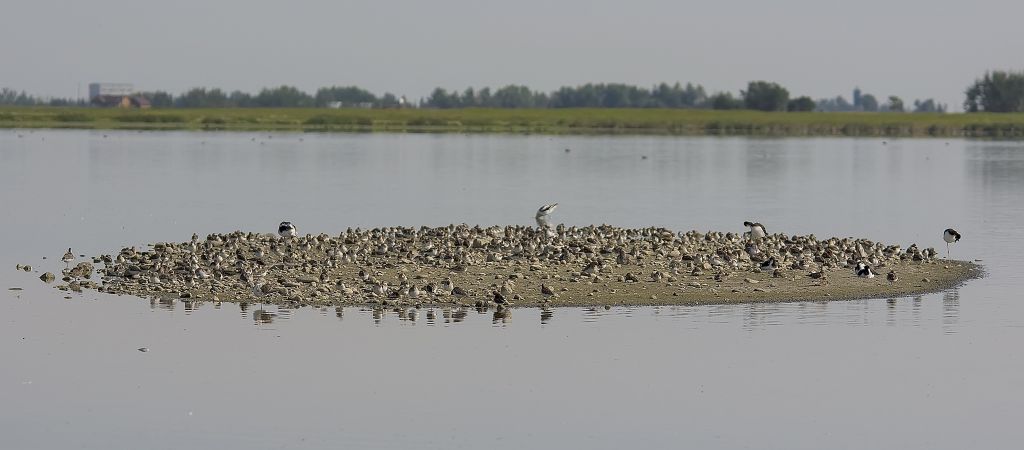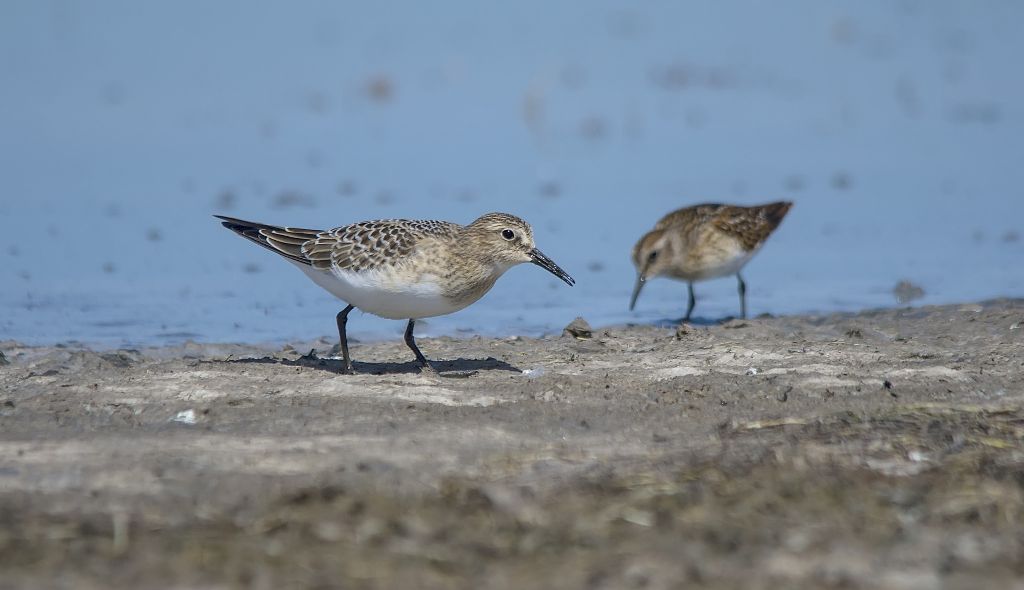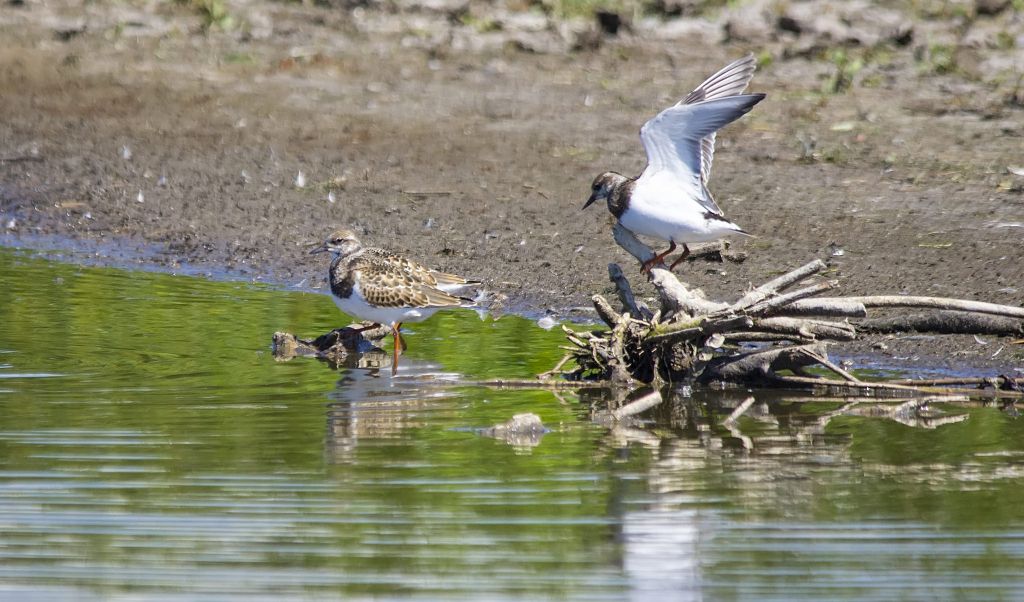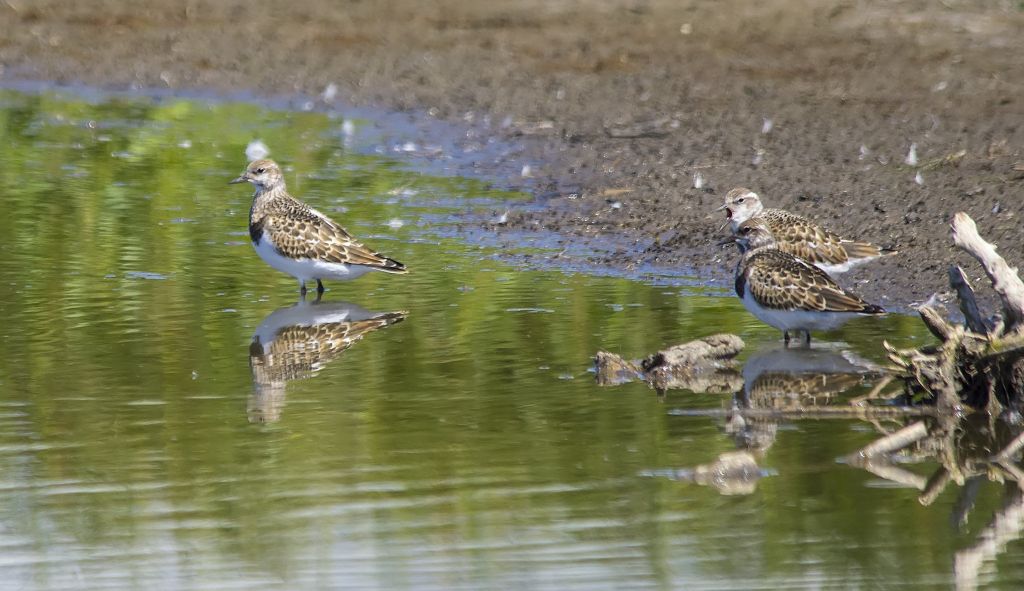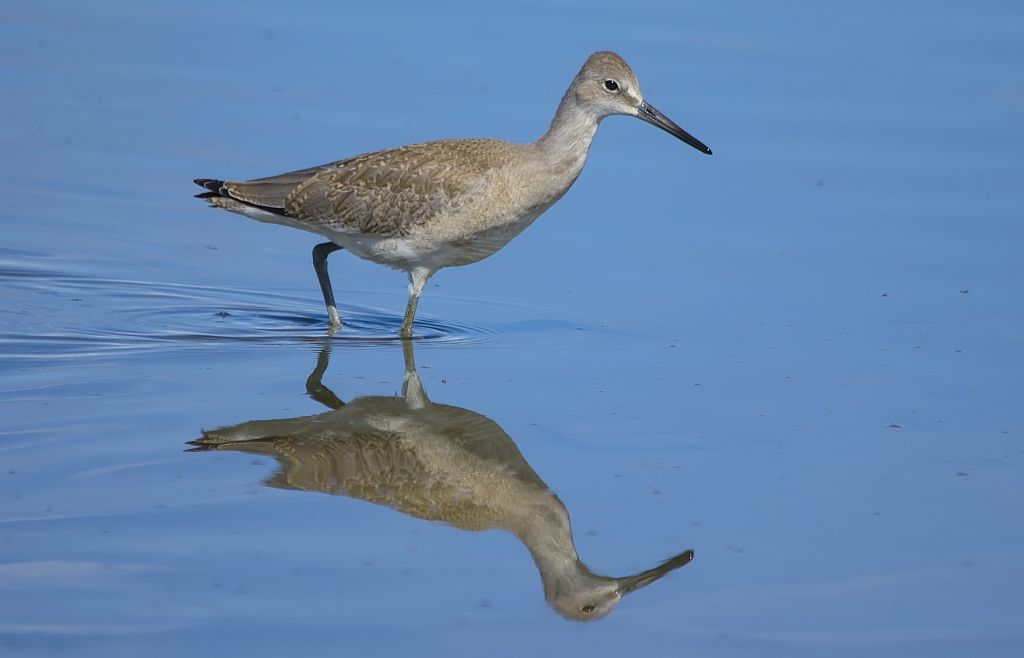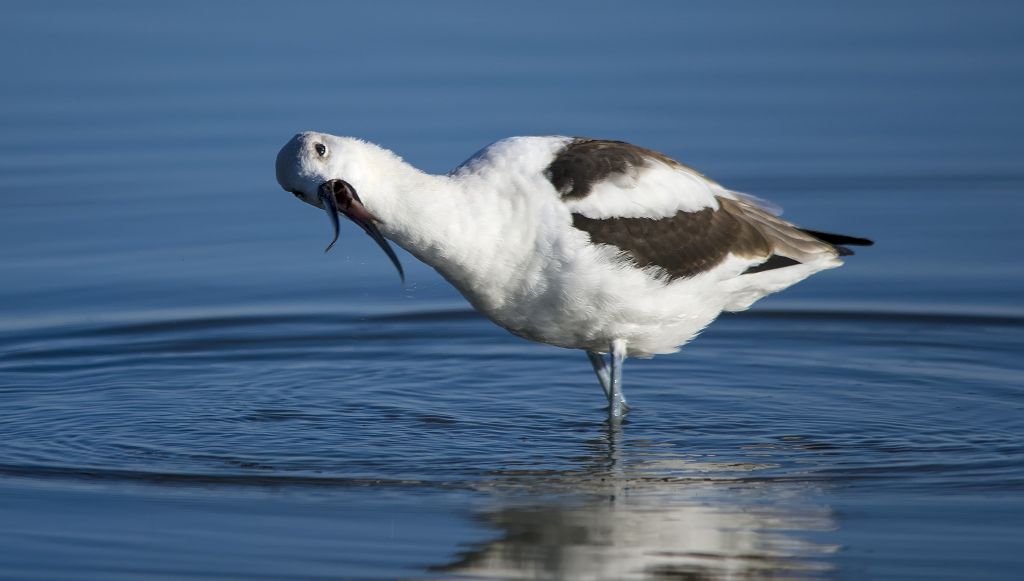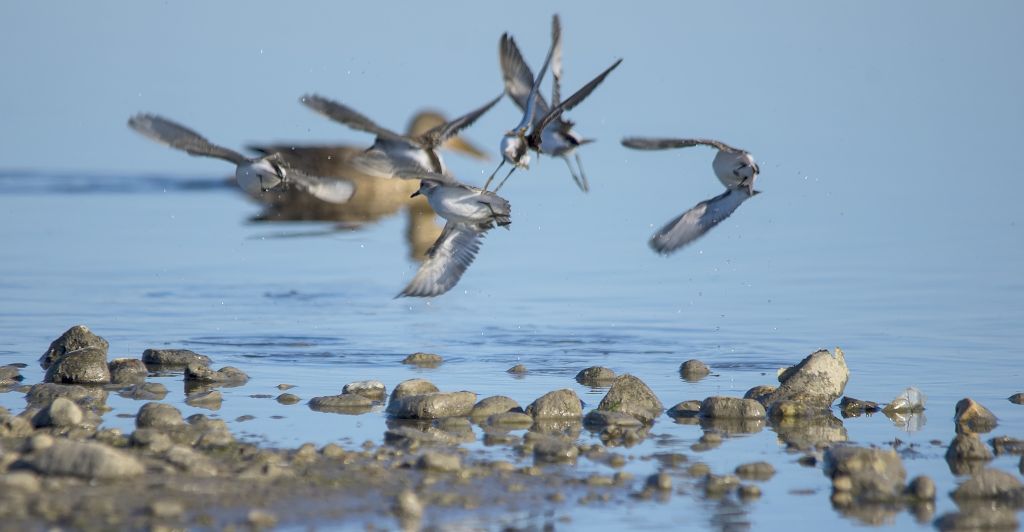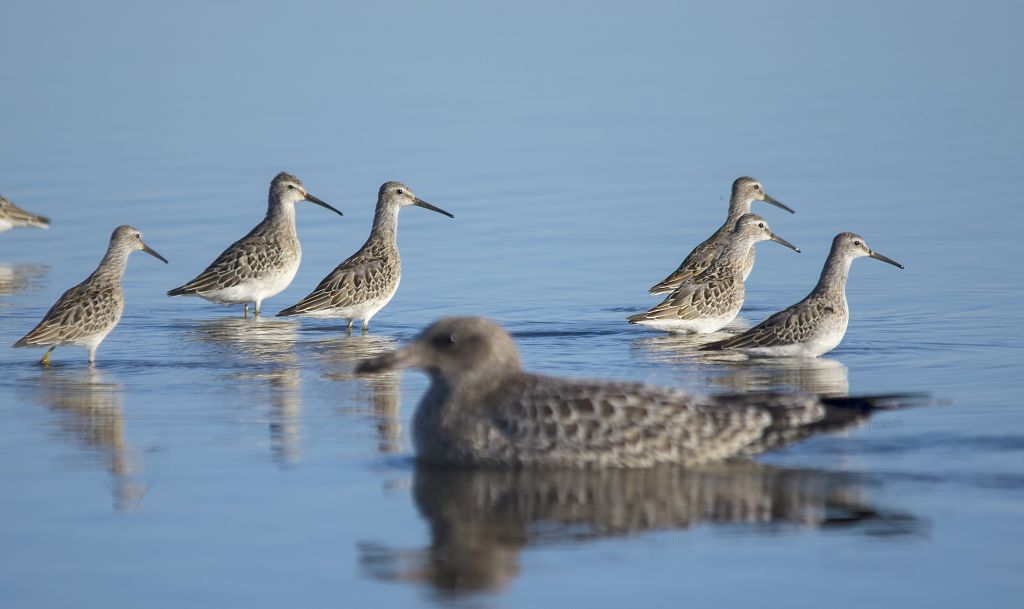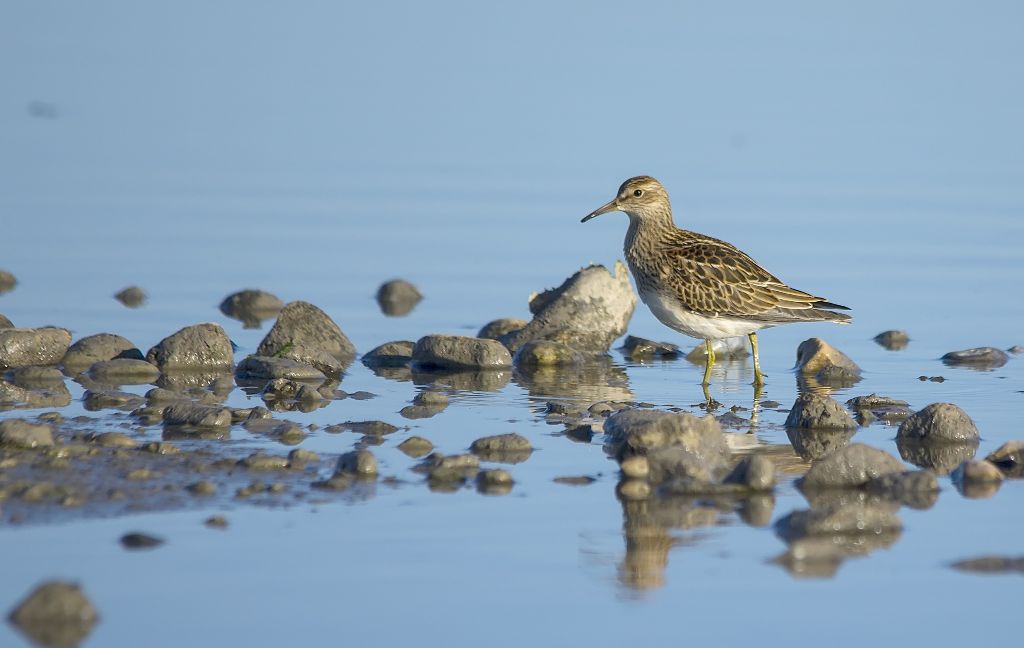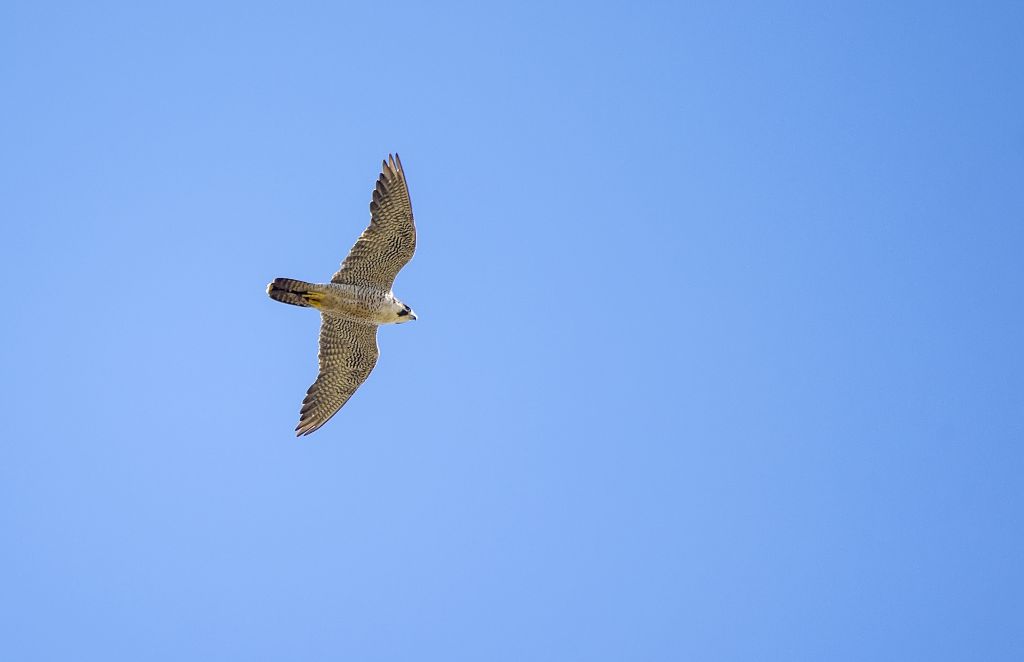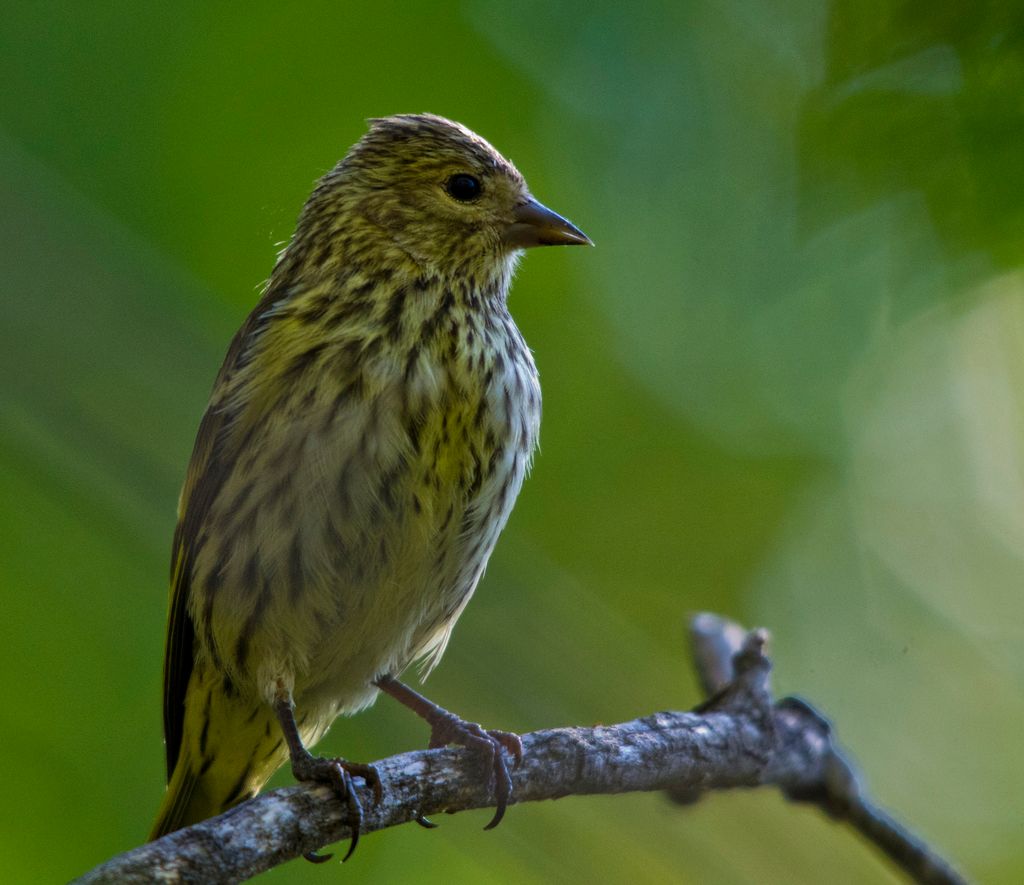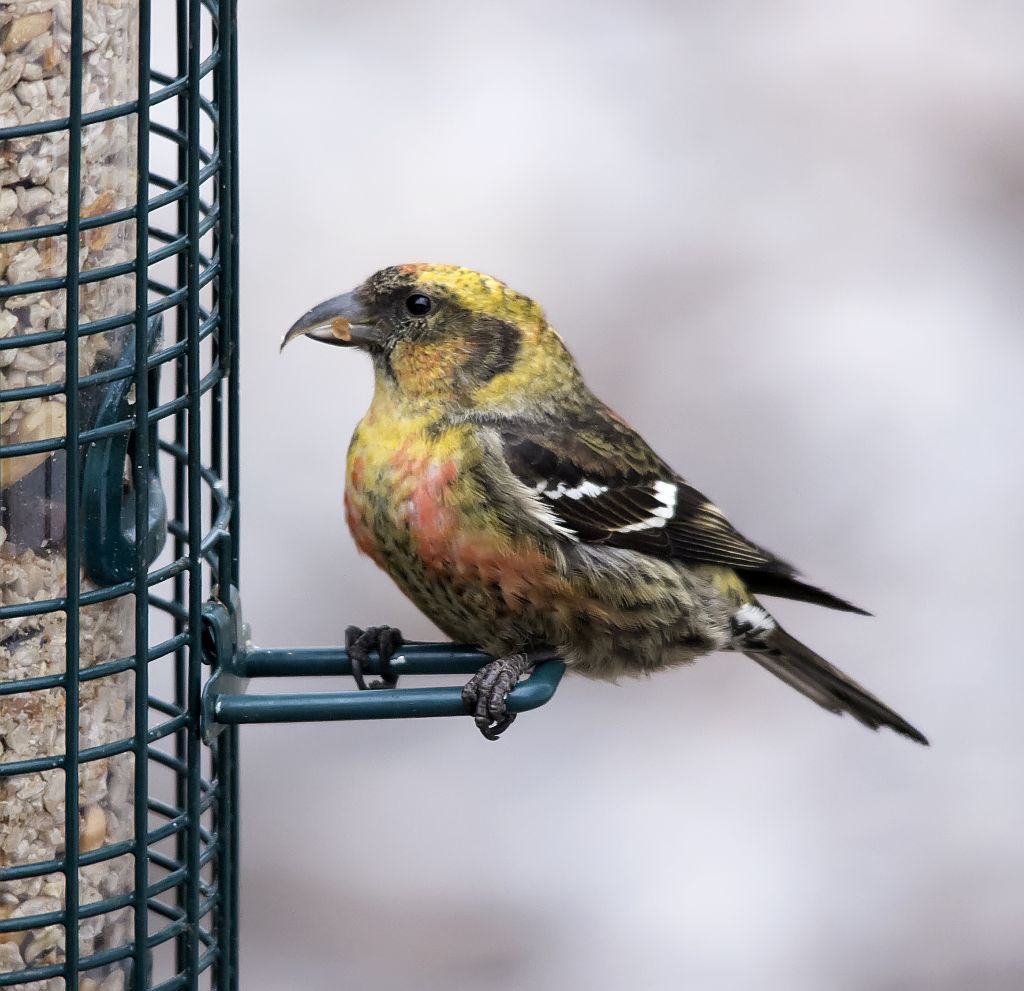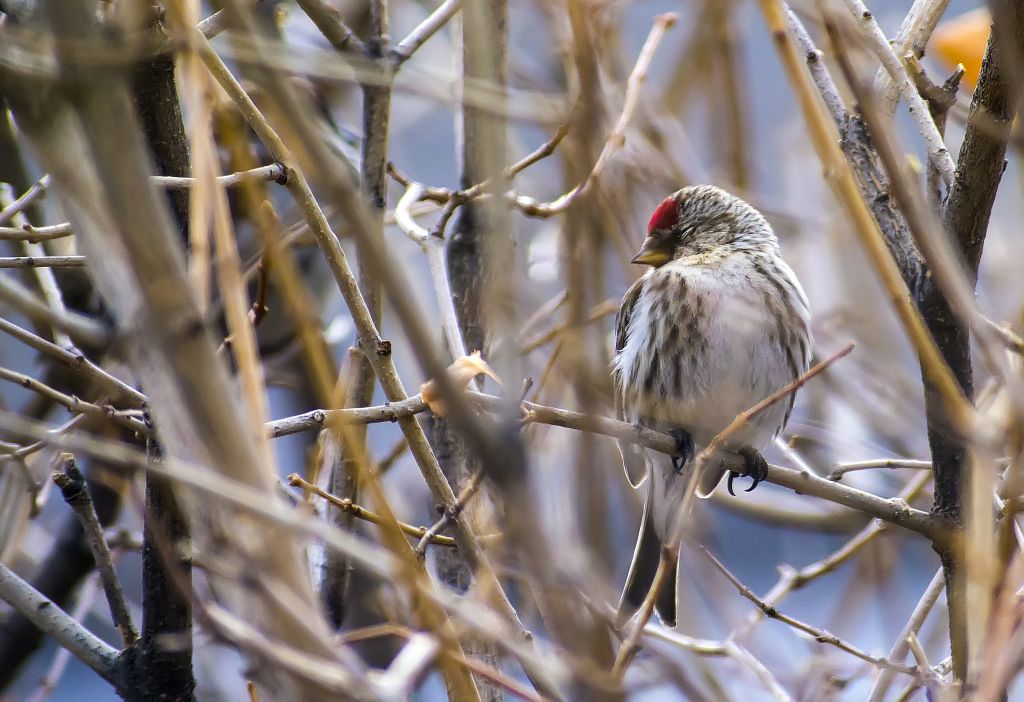Posted by Dan Arndt
My last week leading the Friends of Fish Creek outings on Sunday, November 30 for the Fall Birding course was a cold one. So cold, in fact, that there were really only two attendees, plus myself and the other leader. While the cold weather kept our numbers down, it really did bring the numbers and variety of birds up quite a bit!
As we usually do at this time of year at Carburn Park, we spent most of the time along the river bank checking for waterfowl and raptors, with a little bit of time walking through the wooded areas in search of owls, chickadees, nuthatches and woodpeckers.
Along the first stretch of the river, we found a very large flock of Mallards taking shelter in the undercut banks of the Bow River, and thanks to the sharp eyes of one of our group, this male Lesser Scaup popped out for a couple of minutes before disappearing into the deeper fog rising from the river.
As we walked a little further, hundreds and hundreds of Mallards flew up from their shelter, but as we rounded the first corner, the Canada Geese came into view. From edge to edge of the gravel bars they began to shake off the frost and moving away from us as we approached.
As we walked along scanning the throngs of Canada Geese, we came across one little warm back channel where some ground water was flowing into the river, and harbored a pair of Killdeer. While they were flushed up, we caught sight of a few more Tundra Swans that were resting on the river. On our initial scan, we saw the adult Tundra Swan, but while reviewing my photos for this post, I noticed that we also had an immature Tundra Swan resting beside the adult.
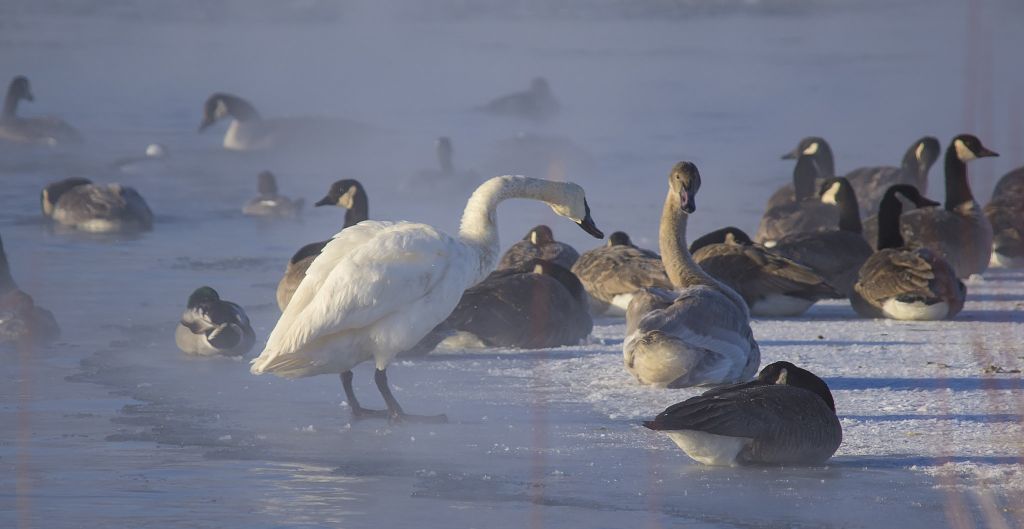
Adult (l) and immature (r) Tundra Swans – Pentax K-5 + Sigma 150-500@500mm
1/1250sec., ƒ/6.3, ISO 500
We made our way through the wooded area alongside the river, we stopped to feed some Black-capped Chickadees, White-breasted Nuthatches, and Downy Woodpeckers in an area that I had just commented had been fairly devoid of much activity on my last few visits to the park. A very nice surprise indeed!
There are some situations where you just have to roll with the punches when it comes to photographing in poor weather, but sometimes it can have pretty interesting results. I shot this group of Bufflehead as they emerged from a fog bank near the north end of Carburn Park, just as we came back into view of the river.
When we got to the far north point of our walk, we watched an immature Bald Eagle eating something that it has plucked out of the river, and when I got my binoculars up to look at it, this Red-tailed Hawk looked to be scavenging whatever the eagle was eating, and then flew off to rest a little further away.
We had made it most of the way through the park before we stumbled across the local herd of White-tailed Deer who came rather close to us in search of some food. This young deer was particularly curious about us and followed us down the path for quite a ways before some other park-goers scared it back into the woods.
A fitting end to the season was this brief sighting of one of the Great Horned Owls in Carburn Park, very likely one of the pair that have nested in the park for a number of years, but most recently right at the edge of the parking lot. It’s always good to see them still hanging around the area, and seemingly doing quite well for themselves.
Have a great week, and good birding!
